Looking for a university place in Clearing? The new edition of the Daily Mail University Guide, published today, can help you find the best university and course for you with its definitive university and subject rankings and comprehensive profiles of all the leading institutions.
Clearing used to be the ‘Last Chance Saloon’ for applicants who had not got the A-level grades they were expecting and therefore left scrambling to find an institution that would take them.
Not any more. Three-quarters of elite universities are hunting for students in Clearing and with students picking up their A-level results tomorrow, experts are predicting a ‘buyer’s market’.
With places on 26,000 courses up for grabs – 3,500 of those courses at elite Russell Group universities including Bristol, Durham and King’s College London – it is a bumper year for vacancies.
And many universities are desperate as their finances have been squeezed by sharp falls in the numbers of lucrative overseas students, who are charged much higher fees than their UK counterparts.
With 43% of universities facing a deficit in 2024-25, according to the Office for Students, they can’t afford empty places earmarked for UK students – with courses and even departments at risk if there are significant shortfalls.
Courteney Sheppard, head of operations at Ucas, said: ‘It’s a good year to be a student applying for undergraduate study. We’re seeing a record number of offers being made, as well as lots of choices available in Clearing.’

The new edition of our University Guide is an essential companion for those looking over the coming days to secure a place to study this autumn
With so many universities and courses to choose from, the new edition of our University Guide is an essential companion for those looking over the coming days to secure a place to study this autumn.
As well as this article showcasing the full rankings for 128 universities, Daily Mail+ subscribers can access the interactive Daily Mail University Guide, where there is a wealth of further information available as well as our exclusive University Finder tool.
Here you can search all the UK’s leading universities and personalise the results according to the factors you value most – even including criteria such as location, accommodation cost and university size.
With the expansion of Clearing to include so many more universities and courses, growing numbers of students are only beginning their search for a place once they have their A-level results. Others who achieve better-than-expected grades will use Clearing to ‘trade up’ – or ‘Adjust’ – to a more prestigious course.
It means universities with lower entry requirements may struggle to fill courses if they lose too many students to their higher-ranking rivals, as happened last year, when several Russell Group universities admitted hundreds of additional UK students, including many who had not achieved their offer grades.
Nick Hillman, director of the Higher Education Policy Institute (Hepi), said: ‘This summer is shaping up to be a buyer’s market for school leavers aiming for university. Demand is flat, so universities are very keen to recruit – or else they’ll have to close courses or even whole departments, which is something they are desperate to avoid.
‘People who do worse than they expected in their exams are well-placed to find a new place through Clearing – including at traditional and prestigious universities.
‘There are places available whether you missed a grade or two or are having to reassess all your options.’
To get you started, all universities are listed in rank order below.
1. Imperial College London

Overview
Our top-ranked university for the third successive year, Imperial saw a record number of applications for places on courses beginning in September 2024. Those applications came from across the world, with 47% of places awarded through Ucas going to international students. The university focuses on science, engineering, mathematics, medicine and business, billing itself as a world-leading university. Imperial’s success is rooted in academic excellence and an unparalleled record in graduate destinations where high-quality jobs and high salaries are the norm. It also has a growing reputation for providing an excellent student experience following its significant recent focus on this after a string of poor scores (now largely corrected) in the annual National Student Survey (NSS). Where the Daily Mail led in being the only UK university ranking to place Imperial top, others have followed: global rankings produced by QS for the past two years have put Imperial as the top-ranked UK university for the first time, standing second in the world behind the Massachusetts Institute of Technology (MIT). The university’s strong social conscience is evidenced by a bursary scheme that is among the most generous in the UK and a contextual admissions scheme – revised for September 2025 admissions – that is expected to increase the proportion of students from under-represented backgrounds.
2. University of Oxford

Overview
Oxford features at the top or close to the top of every domestic and international university ranking and attracts the very brightest of applicants. Nearly half of 2024’s intake achieved A*A*A* at A-level, although it does not routinely ask for A*s across the board. It places more faith in its admissions procedures – which feature interviews and either subject-specific or general aptitude tests – than some of its rivals, with AAA at A-level being the typical offer. Oxford has taken huge strides to diversify its intake over the past decade. In 2024, 66.2% of new students were educated in state schools (although this was down from a peak of 68.6%), 13.6% came from areas with low rates of participation in higher education (17%), and 14.5% from disadvantaged backgrounds (16%). The proportion of black and mixed-ethnic heritage entrants and those who have received free school meals was up between 2020 and 2024. There are 32 undergraduate colleges spanning the ancient and modern, and traditional and relaxed, and not all subjects are available in each. They offer very different social and educational mixes too, so it pays to choose carefully. The deadline for application is earlier than other universities, on October 15.
3. University of Cambridge
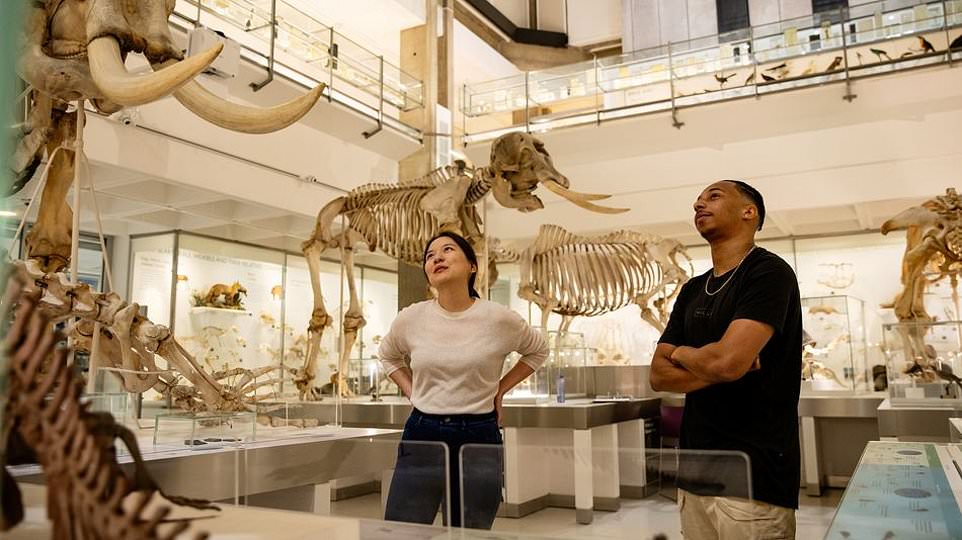
Overview
Cambridge remains one of the most-prized destinations in global higher education. It goes without saying that you need to be clever to get in – 57% of the intake in September 2024 gained A*A*A* at A-level. However, you need more than just good predicted grades to prove you will flourish here. A shake-up of admissions – achieved without any decline in academic standards – has made the whole business of getting a place fairer. The proportion of the intake who are privately educated has dropped sharply (now accounting for 29% of UK students), while one in seven come from the 40% of postcodes considered to be the most deprived. The university has set its sights on ‘serving the UK as a whole’, in the words of vice-chancellor Professor Deborah Prentice. Her comments allude to the fact that 50.7% of admissions come from London and the South East, while 2.4% are from the North East. The university’s outreach work is trying to fix this by generating more applications from the regions. The 29 undergraduate colleges differ sharply, so do visit them before applying. Open days happen early, in the summer term of Year 12. The application deadline – October 15 – is also early.
4. London School of Economics and Political Science

Overview
It takes a university with the global heft of the London School of Economics and Political Science (LSE) – our University of the Year for Student Success – to be able to resist the downturn in international student enrolments due to the UK’s student visa policy. Even LSE had expected a downturn in enrolments, but such fears proved unfounded as the school recorded an increase in tuition-fee income of more than £21million in 2023-24. With a record number of applications last year – amounting to more than 14 for every place – there is no other UK university that can be so selective over who it recruits. The intake is evenly split between UK and international students. A commitment to making the admissions process fair to all meant that one in four UK students offered a place in September 2024 received a contextual offer that cuts the entry requirements by one or two A-level grades. The school specialises in the social sciences, with business, maths and law students also on the books. Its largely pedestrianised precinct in central London is close to theatres, museums and retail distractions. Graduates are well-paid and hugely in demand and there it has more alumni who have gone on to run countries around the world than any other university. Wherever you look at the LSE, there is student success.
5. University College London

Overview
University College London (UCL) is runner-up for our University of the Year award this year after another exceptional performance in our rankings. UCL has an extensive programme of celebrations planned for its bicentenary in 2026. And with good cause. Ranked fifth in the UK in our ranking and ninth in the world in the latest QS World University Rankings, a place at UCL is coveted the world over. International recruits make up the majority of the intake even after the near-30% increase in domestic admissions in 2024, which saw more than 1,000 additional UK undergraduates admitted. Now with two London campuses – the original Bloomsbury base in the heart of London’s West End and the new UCL East in Queen Elizabeth Olympic Park – it is not hard to see why a record near 80,000 applications were received last year, double the number in 2015. A key part of UCL’s 2022-27 strategic plan will see the largest ever expansion of extra-curricular experiences. Academic excellence spans the arts, sciences, engineering, medicine and social sciences. Despite stiff competition for places, almost one in three students gained a place in 2024 via a contextual offer, generally pitched at one or two A-level grades below standard entry requirements. And £13m of financial support goes some way towards offsetting the exorbitant costs of studying in the capital.
6 (joint). University of Strathclyde

Overview
Strathclyde, which wins our UK University of the Year award, is a model 21st-century university. It is among the UK’s leading engineering and technological universities, turning out thousands of high-quality graduates each year in areas of national shortage, and has a strong social conscience. It was our Scottish University of the Year in 2023 and all the qualities that earned the university recognition then still apply today. It was established as a ‘place of useful learning’ more than 225 years ago and its course portfolio keeps that founding aspiration alive. The university’s success is evident in the outstanding graduate employment prospects enjoyed by its students. Strathclyde’s social commitment can be seen in the large numbers of students drawn from non-traditional backgrounds; it has the biggest proportion of students from the most deprived 20% of Scottish postcodes of any high-tariff, research-intensive Scottish university. Admissions in September 2024 were close to an all-time high. While the domestic intake is predominantly Scottish (95% or more), there is good financial support for so-called Rest of UK (RUK) students, as well as for those recruited from areas of deprivation and schools with low rates of progression to higher education in Scotland. Across all four faculties – engineering, humanities and social sciences, science and its Business School – industry and business routinely have input on course structure and programme delivery, with many of those companies offering placements to students.
6 (joint). University of Warwick
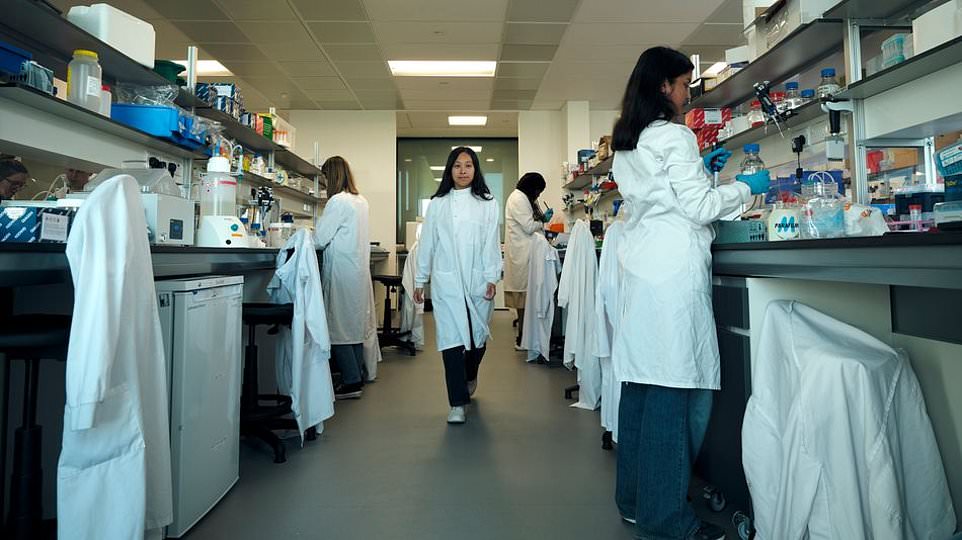
Overview
Sixty years after its establishment, Warwick claims to have achieved more than other universities have accomplished in two centuries. It is hard to disagree, with its consistent top-ten domestic ranking and graduates who are in demand – the sixth most sought-after by top graduate recruiters according to the respected High Fliers report. The university takes on the old guard while embracing the new. Work is about to begin on a £700million social science and STEM (science, technology, engineering and mathematics) research and teaching development and there are plans for more degree apprenticeships to be introduced, which will add to the 1,300 or so apprentices already on campus. Situated on a largely self-contained parkland campus on the edge of Coventry, the university commands some of the highest application numbers. It has weathered the difficulties in international student recruitment better than most. More than one quarter of its intake via Ucas came from overseas last September, when it was also shortlisted for our University of the Year title. Applications are running close to record levels, with more than seven for every place. Outreach programmes reach 300 secondary schools and sixth-form colleges across the Midlands to keep the application pipeline strong.
8. University of Bristol

Overview
Bristol is our Research University of the Year 2026 in recognition of its outstanding research record and reputation. It earned more than £300million in competitively won research grants and contracts in 2023-24 – nearly £100million more than the previous year. Home to the Isambard-AI supercomputer, Bristol is building a formidable record in artificial intelligence. And the £500million Temple Quarter Enterprise Campus development, due to fully open in 2026, will allow Bristol to drive digital, business and social innovation, as well as aid the city centre’s regeneration. More than half the intake comes from London and the South East. Bristol seeks to make a Russell Group university education as affordable as possible, offering a string of bursary awards to support disadvantaged students and encourage applications from under-represented groups. It was one of the first universities to embrace contextual admissions, which take account of applicants’ educational and social background; an astonishing 44% of admissions in September 2024 qualified for a contextual offer up to two A-level grades below the standard entry requirements. Applications are booming, rising to a new record for September 2024 entry when more than 63,000 named Bristol as one of their five Ucas choices. Despite rising admissions – up 7.6% last year – competition for places is fierce, with the university’s reputation for producing in-demand graduates to the fore.
9. University of Bath

Overview
Bath celebrates its 60th birthday next year and is one of the great success stories of the 1960s generation of universities, shortlisted for our UK University of the Year 2026 award for its all-round strength and excellence. Those origins are betrayed by the acres of concrete on its hillside campus, which sit alongside plenty of modern academic and residential developments. Bath also boasts some of the best sports facilities in the UK – Team Bath is one of the big hitters in the university sports leagues – with many international-class athletes basing themselves here during their studies. Ever-present in the elite top ten of our ranking, the university is best known for science, engineering and business – and for its graduates getting well-paid and high-quality jobs. This success is hard-won, with two-thirds of students completing either a placement or study abroad year to make them more rounded graduates. It was our 2024 University of the Year for Graduate Jobs. For the second successive year, both applications and admissions have hit record levels. Applications for admission in September 2024 were up by 11% on the year before and by a whopping 40% on pre-pandemic levels, while admissions were up by more than 20% on 2019 levels.
10. University of St Andrews

Overview
St Andrews, our Scottish University of the Year, is a plum university prize and there are close to ten applications for every place, making it one of the hardest universities to get into in the UK. More than a quarter of the undergraduates come from abroad – it’s popular among Americans, in particular. Perched on the Fife coast, the university dominates the town, offering an alternative to Oxford and Cambridge for the brightest applicants. Traditions abound – notably the Raisin Monday foam fight – and the students’ distinctive red gowns are a familiar sight on formal occasions. Academic excellence is also abundant, and it has one of the strongest performances of any university in our exclusive subject tables. And from September, a medical degree is back after an absence of more than 50 years. Until now, students could do three years of such a degree at St Andrews before spending their clinical practice years at a partner university. From next month, a full five-year medical degree will be offered onsite, run in partnership with NHS Fife. St Andrews’s repeated success in the annual National Student Survey is proof that academically demanding, multi-faculty, larger institutions can do well. That ringing endorsement from its students and their onward success in the graduate jobs market underpins St Andrews’s consistently excellent showing in our ranking.
11. King’s College London

Overview
King’s is one of UK higher education’s citadels. Its academic standing and location at the heart of London gives it an international appeal that saw more than a third of the undergraduate intake recruited from overseas in 2024. It has one of the most socially inclusive and diverse student bodies of all Russell Group universities. Nearly 40% of the intake are the first in their immediate family to go to university and more than half are of Asian or black heritage. More than three-quarters of the domestic intake are recruited from London and the South East. A huge contingent of students is studying medicine, dentistry and healthcare courses across three teaching hospitals – Guy’s, St Thomas’ and King’s College Hospital (KCH). The imminent opening of the Pears Maudsley Centre for Children and Young People at KCH is the latest medical bauble, bringing together researchers and clinicians to address the crisis in youngsters’ mental health. Elsewhere, King’s is famed for its social science, law, history, science and engineering provision. Applications are near a record high and domestic admissions in 2024 jumped by just under 1,000, more than offsetting the small drop in international admissions, to a level only beaten during the pandemic.
12. University of Dundee

Overview
No university has come closer to going bust than Dundee during the ongoing financial crisis in higher education. A cash injection of £22million from the Scottish Funding Council in March 2025 kept the lights on after administrators warned that Dundee could run out of money by the end of June. The source of the problem is a £35million hole in the university’s finances. Within weeks of its disclosure in late 2024, Dundee’s then principal Professor Iain Gillespie resigned. The university is now looking at plans to shed around one in ten jobs, while ‘reconfiguring academic units’ and scaling back research. So how did this come to pass? An independent inquiry recently deemed it to be the result of failings in financial monitoring, management and governance. Should students still apply? Yes, but with the awareness that the coming months are going to be difficult. Dundee, which we named our Scottish University of the Year only 12 months ago, has forged an outstanding reputation – notably in the likes of medicine, life sciences and art and design – since gaining independence from the University of St Andrews in 1967. For that reputation to survive, the cuts will need to be both judicious and primarily in non-student-facing areas.
13. University of Sheffield
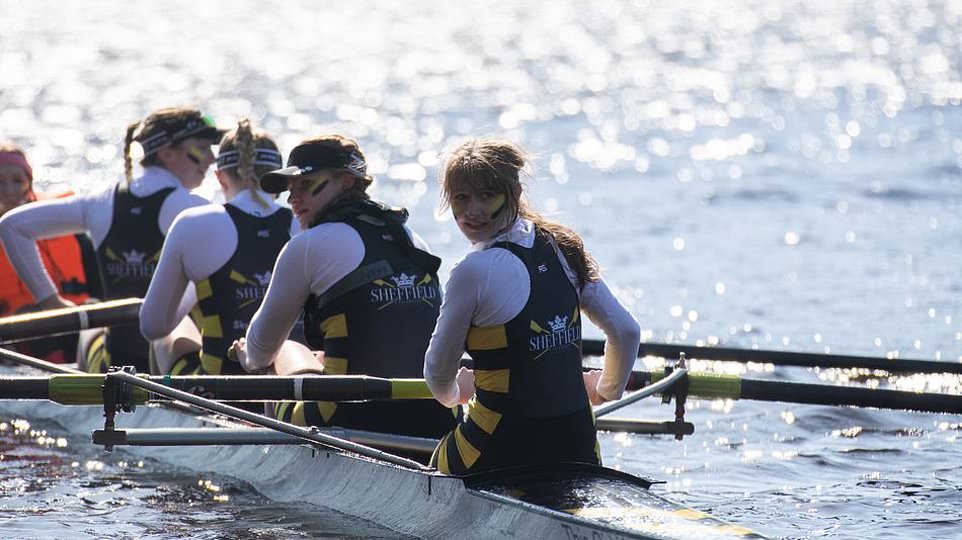
Overview
Sheffield has made a return to the top 100 of the QS World University Rankings after a two-year absence and continues to be the top-ranked university in northern England in our guide. Sheffield was shortlisted for our University of the Year title last year. It has formidable strength in engineering, a highly regarded medical school and excellent provision for healthcare courses which have seen heavy recent investment in facilities. Sheffield students are popular with employers; its graduates are the 12th most-targeted by top employers according to the latest High Fliers report. A Russell Group member, Sheffield recruits widely from across the UK, with around one in six undergraduates recruited globally. The city is a popular choice with a strong student culture and easy access to the Peak District. Applications levelled out for admission in September 2024 after four consecutive rises but with around eight chasing every place, Sheffield can pick the brightest. A generous contextual admissions scheme that knocks as many as three grades off standard entry requirements ensures a broad social mix on campus. More than 8,500 bursary, scholarship and financial hardship awards made in 2023-24 help students keep their heads above water financially.
14. Durham University

Overview
A sharp expansion in student numbers should make Durham a more attainable prospect for a wider cross-section of students. The number of undergraduates recruited in September 2024 leapt by 20% and further expansion is planned for September 2025. The university’s new access and participation plan commits the university to diversifying its intake, too. Some of the traditional perceptions of the university remain true, however. Since Oxford and Cambridge moved to recruit more students from state schools, Durham has been the most popular destination for private school pupils, who now account for 37% of the intake. More than a third of undergraduates come from London and the South East. They travel for a distinctive university experience, centred on the 16 undergraduate colleges, which are social rather than academic groupings (unlike Oxbridge). The so-called Hill colleges are spread out to the south of the city centre, while the Bailey colleges are located in largely historic premises in the centre, with Durham Castle (home to University College) the jewel in the crown. There is all-round academic strength spanning the arts, sciences and social sciences. The university prides itself on its wider student experience in which 85% of students participate, be that in university and college sport, volunteering, theatre, music or student media.
15 (joint). Loughborough University

Overview
If you are good at sport and aim to play at a high level at university, Loughborough has to be on your shortlist. If you want access to the best facilities on this side of the Atlantic and to rub shoulders with athletes who have represented their country or will go on to, then it ought to be at the top of that shortlist. At last summer’s Olympics and Paralympics in Paris, Loughborough-based competitors or those with a close connection to the university scooped 11 gold, ten silver and 14 bronze medals. Had it been a country, it would have finished 16th in the medal table ahead of the likes of Brazil. And its student athletes have won the British Universities and College Sport (Bucs) men’s and women’s titles for 44 consecutive years. Facilities are so good that sports including athletics have their national headquarters onsite. Loughborough is strong academically, too. It has an outstanding reputation in art, design and engineering and performs well in our subject rankings across the board. Academic life is centred on the 523-acre campus where 6,000 students live. The university ranks in the top ten nationally for the proportion of graduates who land high-skilled jobs. So, there are brains to go with the brawn.
15 (joint). Queen Mary University of London

Overview
Of all the elite Russell Group universities, Queen Mary both walks the walk and talks the talk when it comes to social inclusion, creating a diverse student body while demanding high entry grades. About three-quarters of the intake are drawn from ethnic minorities and more than 40% are the first in their close family to go to university. One in five gain a place with a contextual offer that reduces the standard ask by between one and three A-level grades. Already-wide eligibility criteria was broadened further this year to include students with a disability and those on free school meals. A popular Ucas choice, applications are at a record high. Most students are based on an attractive canal-side campus in Mile End that has seen heavy recent investment, with further outposts in Whitechapel, West Smithfield and Lincoln’s Inn Fields. More than 90% of students are recruited from within the capital or the home counties and East Anglia. Courses for which the university is best known span business, social sciences, engineering, law, medicine and healthcare more broadly. Unusually for a Russell Group university there are around 700 degree apprentice learners enrolled, and it has plans to expand further with medicine, tech and legal options. Ofsted recently rated Queen Mary’s apprenticeship provision as outstanding.
15 (joint). University of Southampton
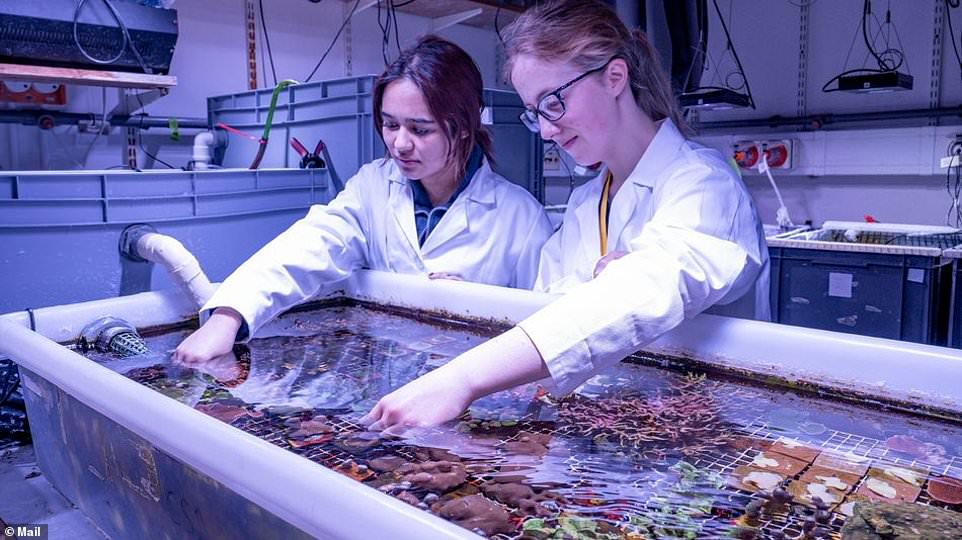
Overview
An ongoing £600million campus investment plan at Southampton is helping drive a surge in applications, which have never been higher than in the past two years. Even an 8% increase in the number of admissions in September 2024, causing them to reach their highest level since 2015, still left stiff competition with almost eight applications per place. Southampton is one of the 24-strong Russell Group of research-intensive universities which also tend to command the highest entry requirements. A contextual offers scheme that knocks two A-level grades off standard entry requirements helps to widen access. An extensive web of careers support ensures that opportunities for graduates to land high-skilled jobs and earn high salaries – one of the university’s strongest performance outcomes – extend to students from all backgrounds, too. Mental health and wellbeing support is also among the best. The university is based on several sites across Southampton, with the main Highfield campus being the mothership and the focus of much of the ongoing developments that include a new STEM (science, technology, engineering and mathematics) teaching building and a clinical skills hub. Engineering is the biggest subject area here and one in which the university enjoys considerable success in our subject rankings. Investment is also being put into its city centre campus site and the outlying Winchester campus, home to the Winchester School of Art.
18. University of Leeds
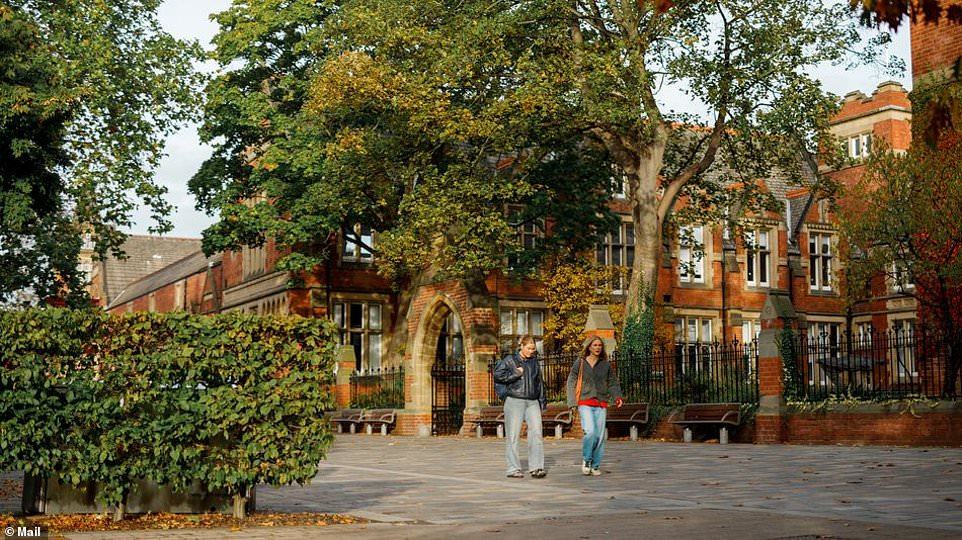
Overview
Leeds is a powerhouse of the British higher-education system and a popular destination. There were more than 68,000 applications for a place in September 2024, when the university boosted its undergraduate intake by 680 (to 8,480), in part to offset an anticipated fall in the number of overseas postgraduates. The university’s appeal is not hard to fathom. A member of the elite Russell Group, its graduates are well-paid and in demand with employers. It occupies an attractive city centre campus in a student-centric northern city that knows how to enjoy itself. After a run of poor scores in the annual National Student Survey, the 2025 results showed signs of recovery and helped Leeds to a top 20 finish in our overall institutional ranking for the first time. The university is taking steps to better engage its students by consulting them on which campus upgrades to action first. A strong social conscience is evidenced by the fact that about one in five students gains a place with a contextual offer in recognition of educational, economic or social disadvantage. Diversity is extended further by five foundation-year programmes, which give access to full degree courses with very un-Russell Group A-level grade requirements, starting as low as CDD.
19. University of Manchester

Overview
A modest improvement in student scores for teaching excellence and student experience in this year’s National Student Survey (NSS) have helped lift Manchester into the top 20 of our overall ranking. For many years, the university ranked almost as high in the QS World University Rankings as it did in domestic equivalents. This apparent anomaly arose from the fact that global rankings do not take account of student satisfaction, as measured by the NSS, in which Manchester has previously performed poorly in all sections. Not that poor performance in the NSS has hindered applications, as Manchester has been for many years the most-applied-to university in the UK. However, seven consecutive years of increases came to a stop in 2024, with a 1% drop, and some 9,985 students were admitted out of 92,500 applications. Higher education on this scale creates what Manchester itself calls a ‘mini metropolis’ for which it is currently trying to cater with a series of ‘cosy campus’ upgrades, rolled out in seven locations. This includes the foyer of the main Alan Gilbert Learning Commons and the University Place Entrance Drum. Free facilities being added include hot water for tea, coffee and meals; microwave ovens; hand washing and washing-up facilities; and places for students to study or socialise. And the legendary Manchester social scene is, of course, the university’s secret weapon. It’s a formidable combination.
20 (joint). University of Birmingham
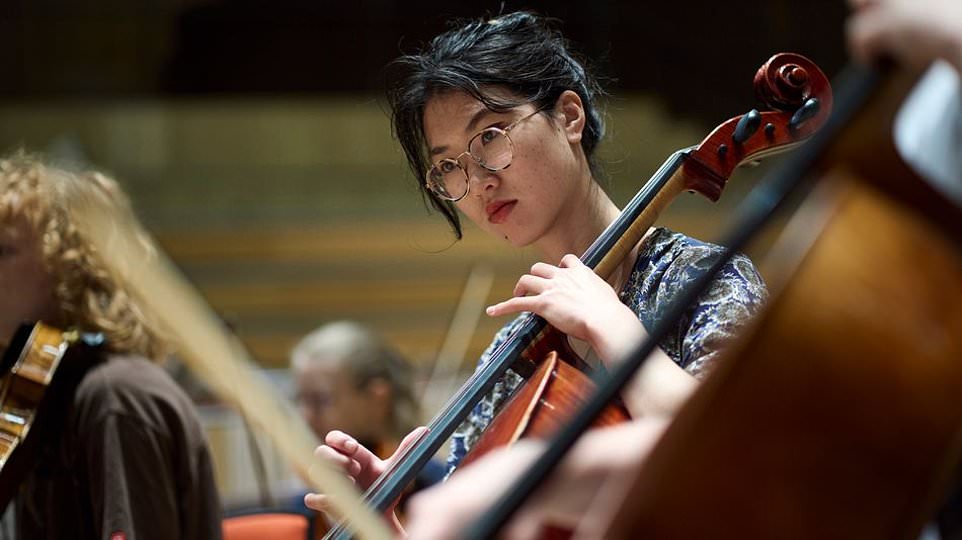
Overview
Birmingham recruited an additional 1,500 undergraduates in September 2024 compared to the previous year, expanding its intake across a variety of courses and accepting more students who had missed their offer grades than usual. Although there are some 37,000 undergraduate and postgraduate students, size does not make things impersonal here – course leaders on some degree programmes telephoned those who had gained places on results day last summer to welcome them. Two-thirds of UK entrants to this research-intensive Russell Group university come from the West Midlands, London and the South East, and there is a large overseas contingent, too. Many students are drawn to Birmingham’s excellent academic reputation across a swathe of subject areas, coupled with its stellar graduate outcomes. It is one of the original redbrick universities, so called because of the materials used in the principal buildings which date from the early 20th century. The university is located in the affluent suburb of Edgbaston, which is a seven-minute train ride from the city centre, but most students live out in the neighbouring (and less salubrious) Selly Oak district. Birmingham is socially inclusive, providing financial support for one in five students each year through a £14m bursary and scholarship programme.
20 (joint). University of Edinburgh

Overview
Nowhere is the disconnect between the findings of the annual National Student Survey (NSS) and the popularity of a university as stark as it is at the University of Edinburgh. Ranked by its own students in the bottom ten of all three of the NSS-derived performance measures in our league table – covering teaching excellence, student experience and student support (with the latter seeing the worst ranking of all universities) – Edinburgh is nevertheless the third most-applied-to university in the country. Indeed, such is the university’s global standing that well over one-third of undergraduates come from abroad to join some 40,000 undergraduates and postgraduates based on university sites scattered throughout the Scottish capital. Founded in 1583, the university has a long history of academic excellence and is currently a world leader in artificial intelligence (AI) and data science. It is home to the UK’s national supercomputer, Archer2, and has developed six new hubs in different areas of data-centric technologies and AI, bringing together academics and industry to drive further innovation. The Scottish capital provides a beguiling backdrop to the mostly four-year courses (the norm in Scotland) and the university offers some of the cheapest student accommodation in the UK, particularly for those willing to share an ensuite room.
22 (joint). University of Glasgow

Overview
The next stage of Glasgow’s £1bn campus redevelopment is under way as it seeks to create facilities to keep it ahead of the pack before its 600th anniversary in 2051. Only Oxford, Cambridge and St Andrews have been around longer, and Glasgow’s global reputation for excellence means it recruits internationally, with overseas students making up around one in five of the record undergraduate intake in September 2024. The main Gilmorehill campus is in Glasgow’s West End; a 14-acre site next door is where all the new buildings are going up. A further campus at Garscube, four miles away, is home to outdoor sports facilities, veterinary medicine students and the catered Wolfson Hall student accommodation. Further afield in Dumfries, the university teaches social and environmental sustainability, as well as its primary education with teaching qualification. Four in five of the domestic intake are recruited from Scotland, although a sizeable minority make the long trip from London and South-East England – some of them taking advantage of generous bursary support that more than offsets the extra year of study required for Scottish degrees for students from low-income households.
22 (joint). University of Surrey

Overview
Surrey is a university on the rise, admitting a record number of undergraduates last September as applications climbed above 30,000 for the first time since 2019. The attraction is not hard to explain, with Surrey outgunning many Russell Group universities in the graduate employment stakes. Average starting salaries of £30,000 and more than four in every five students believing their careers to be on track 15 months after leaving speaks volumes. Healthcare, education and finance are the top three industry destinations for Surrey graduates. The university recruits three-quarters of its intake from London and the South East, with students heading to its two modern campuses in Guildford. With both a new medical school and a veterinary school having opened in the past decade, Surrey now has all the academic baubles it needs to sustain a high ranking and a good number of applications – with international enrolments holding up even as others universities struggle. The intake is notably diverse and about a third come from homes where parents did not attend university. While bursary and scholarship provision is smaller than most, Surrey defies the property economics of South-East England by offering some of the cheapest student rooms at any university, with prices starting at just £85 a week.
24 (joint). Heriot-Watt University

Overview
Heriot-Watt University (HWU) specialises in the science, technology, engineering and maths (STEM) subjects for which there remains a national demand for graduates. This partly explains the university’s great success in the graduate jobs market, with HWU students commanding some of the highest graduate starting salaries of any British university. A 2023 survey conducted by Novuna showed HWU was the top university in the UK for the number of graduates in chief executive or managing director roles. The university runs seven graduate apprenticeship programmes and has more than 400 students enrolled on them. HWU also helps prepare all students for work and post-graduation through both industrial and overseas placements, including years or semesters abroad at its Dubai or Malaysia campuses. The Riccarton campus on the western edge of Edinburgh is home to the bulk of the university’s students, who have the cultural and social playground of the Scottish capital on their doorstep. There are two smaller campuses in Galashiels (the base for fashion, textile and design courses) and Stromness on Orkney, which is home to three postgraduate MScs in marine science and renewable energy, as well as the International Centre for Island Technology.
24 (joint). Queen’s University, Belfast

Overview
Queen’s University Belfast enjoys a reputation as the Oxbridge of Northern Ireland. While that may be true academically, the university has a longstanding record of social inclusion – which sees 32% of students recruited from low-income backgrounds. Celebrating its 180th anniversary this year, Queen’s is enjoying a moment, with applications close to an all-time high and admissions at a level beaten only during the pandemic. About 10% of the British intake now come from beyond Northern Ireland, and the university enjoys buoyant recruitment from around the world. Hillary Clinton has been chancellor since 2020, a symbol of the international mindset that now pervades the university. While academic excellence spans many subjects including medicine and healthcare, science, humanities and the arts, the university also nurtures the practical application of knowledge. It has ranked first or second in the past two Entrepreneurial Impact Rankings, produced by Octopus Ventures, which judged universities on the patents and spin-out companies they created. Queen’s is located in an attractive district to the south of the city centre with the Lanyon Building at its heart. The opening next year of the eco-friendly Passivhaus student accommodation shows university architecture is also moving with the times.
26. City St George’s, University of London

Overview
The former City, University of London and St George’s, University of London came together officially on August 1, 2024, but this is the first time they have appeared as a merged entity in our ranking. The new institution, City St George’s, University of London, is now one of the largest suppliers of healthcare workers in the capital. It is the first of many predicted mergers likely to take place across UK higher education in the coming years. It has created one of the big hitters within the University of London, with strength spanning medicine and healthcare (within both institutions), and business and the professions (at City). It was recognised by the two awards we gave the newly merged institution a year ago – University of the Year for Graduate Jobs and runner-up in our University of the Year title. Applications and admissions at the two predecessor institutions were already on the rise, up 9% and 16% respectively on the previous year for courses beginning in September 2024, so there is every chance of creating an academic powerhouse. Almost four in every five UK entrants were recruited from the capital and almost two-thirds of the intake were of Asian or black heritage.
27. University of Liverpool

Overview
Applications are booming at Liverpool. One of the redbrick universities founded in the late 19th century, the university retains the civic mission that characterised these institutions at their launch. Committed to social diversity, it recruits 89% of its UK students from state schools, and one third of students come from homes where the parents did not go to university. Its city centre campus adjoins that of Liverpool John Moores University, creating a huge university precinct at the heart of the city. Dentistry, veterinary medicine, nursing, architecture and engineering are some of the subjects the university is best known for. Liverpool demonstrates strength across multiple disciplines, but business and law are among the top picks in our subject rankings. Although popular in its home region, Liverpool recruits strongly from across the UK with 1,170 of the record 6,750 UK recruits in September 2024 coming from London and the South East. Liverpool was one of the Russell Group universities that vastly increased its domestic intake of students last year to offset anticipated falls in overseas students. Numbers were up by 23.7% from the level seen just two years before, beating even the pandemic years of inflated university admissions.
28 (joint). University of Exeter

Overview
Record numbers of students applied to Exeter for courses which began in September last year. It is still a hugely popular choice for privately educated students and draws around half of its intake from the most affluent regions of the country. But it also spends upwards of £9m on bursaries, scholarships and hardship support for its increasingly diverse student body, a quarter of whom gain their places with a contextual offer – a proportion the university predicts will rise further still. It was named Higher Education Institution of the Year in 2023 by the National Education Opportunities Network for its work in widening access to university. It is among the ten universities most popular with the leading graduate employers (ahead of both Oxford and Cambridge); the salaries graduates command are among the highest; and few universities can rival Exeter for location. The main Streatham campus is one of the UK’s most beautiful and is home to the majority of students. There are smaller sites such as its St Luke’s campus, which is home to the medical school, and at Penryn in Cornwall. Exeter is also one of the most solvent universities in the UK right now, registering a surplus of more than £186m in 2023-24.
28 (joint). University of Nottingham

Overview
A near-5,000 drop in applications via Ucas for admission in September 2024, coupled with a near-1,300 increase in students admitted, made the task of winning a place at one of the UK’s top universities considerably easier last year. The drop in applications is unlikely to be maintained for long such is the strength of Nottingham’s offer to applicants. A member of the Russell Group of highly selective, research-intensive universities, Nottingham has formidable strength in engineering and a strong presence across all academic disciplines. It is the third most-targeted university for leading graduate employers, according to High Fliers research, and its graduates command among the highest salaries in their first jobs. The proactive careers and employability service gets to work with pre-entry summer school participants, offering them careers activities, as well as fostering extensive alumni networks. Nottingham occupies several sites just off the city centre, with the 300-acre University Park campus the heart of the operation. Academic, residential and social facilities are easily absorbed within the spacious grounds. Its sports facilities have been the subject of a recent investment that has seen tangible results on university pitches across the country. Nottingham was the top UK university for team sports in 2024-25.
30 (joint). Cardiff University

Overview
Record admissions in September last year, and another bumper crop of applications, stand in stark contrast to the proposed job losses and threat of course closures that have put Cardiff in the news for all the wrong reasons this year. The negative headlines will be viewed as the price to pay for delivering on the university’s 2035 strategy document Our Future, Together, which is upfront in declaring: ‘Universities are facing an existential moment. The current model is no longer fit for purpose’. In other words, what’s happening at Cardiff today will be happening in plenty of other universities tomorrow. Cardiff is the biggest university in Wales and the only one to be a member of the elite Russell Group. It occupies two campuses: Cathays Park in the city centre and the more modern Heath Park a mile away, which is home to healthcare-related courses and the University Hospital of Wales, where the medical school is located. It is one of the more socially inclusive of the Russell Group universities and has a broad-based academic excellence. Improved scores in this year’s National Student Survey have helped push the university into our elite top 30. The city is hugely popular with students at its three universities and is one of the UK’s hot student destinations. Cardiff will be hoping this features large in applicants’ minds while the financial dust settles.
30 (joint). University of York

Overview
York is our Community University of the Year – an acknowledgement of the role the university plays in the cultural, economic and academic life not just of the City of York but of the wider northern region. This is embodied culturally by the university’s annual Festival of Ideas, a programme of more than 200 talks and events that plays to a combined audience of 60,000. But York also has a national and global academic footprint. It recruits students from across the UK, with no one region dominating, thanks to its excellent reputation across most academic disciplines. It is one of just four members of the research-intensive and highly selective Russell Group of universities to secure both a top-ten ranking for research and a gold rating in the most recent Teaching Excellence Framework assessments. There is particular strength in the social sciences, history, languages and biosciences. The university’s 1960s origins are evident in the concrete of the original Heslington campus (now called Campus West), an attractive low-rise site built around a pond with a sizeable population of ducks. The newer Campus East site has been the scene of much recent development, and the university’s new School of Architecture opens there in September.
32. Aston University
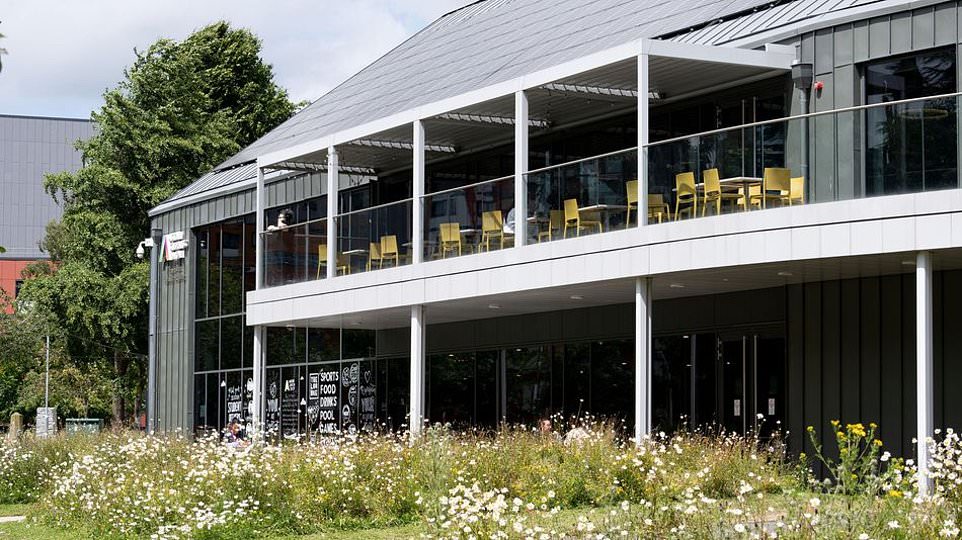
Overview
Enrolments at Aston – our University of the Year for Student Success last year – surged by more than 16% in September 2024. The intake rose above 4,000 for the first time and was 44% higher than just six years before. With more than 23,000 applications for the third successive year, word is getting out about this institution that positions itself to be ‘the leading university for students aspiring to success in business’. Aston was one of a small number of universities to secure triple gold in the last Teaching Excellence Framework covering student experience, graduate outcomes and an overall rating. Business, computing, engineering and healthcare subjects dominate the course portfolio. More than 70% of last September’s intake came from the West Midlands and the student population is reflective of the local area, with more than eight in ten students being of ethnic minority heritage – the highest proportion at any UK university. Aston takes pride in its diversity and embraces degree apprenticeships, too, with around 1,300 apprentices currently enrolled and following 11 pathways. The university sits in the top 20 nationally for the proportion of graduates who land high-skilled jobs and just outside the top 30 for graduate salaries.
33. University of East Anglia

Overview
Broadening the student mind and experience is at the heart of what the University of East Anglia (UEA) offers to its students. For many years now, UEA has pushed study-abroad options, and by 2026 the university will have more than 200 global partners. It is also significantly expanding the number of degrees offered with foundation years (to widen access and diversify the student body) and work placement years (to increase graduate employability). A dental school moved a step closer in June with approval from the General Dental Council for UEA to provide undergraduate training. UEA is about to see some major upgrades to its attractive parkland campus come on stream, too – central among them the upgrade to the iconic, Grade II-listed Lasdun Wall. UEA came early to the financial crisis besetting many other universities, and consequently is now coming out the other side. Having cut jobs, courses and budgets, it has emerged leaner and more student-focused. Admissions jumped by 9% in September 2024 and the university will be hoping for a rise in the number of applications, too. UEA has a strong global reputation for everything from creative writing to climate change courses. Its sports facilities are among the best in the UK, while the Sainsbury Centre is home to one of the finest collections of modern art in the country.
34. University of Leicester

Overview
Leicester is one of the best bargains to be had in the annual dash to secure a university place. In exchange for mostly medium-tariff offers, Leicester – our University of the Year last year – offers a high-quality student experience in a bustling multi-cultural city. Students rate the institution highly in the annual National Student Survey, graduates go on to well-paid jobs and teaching is underpinned by a strong (some might say box-office) record in research. This is the university where DNA fingerprinting was pioneered by Professor Alec Jeffreys in 1984; it is also the university that, with others, discovered the remains of Richard III under a Leicester car park in 2013. It takes the requirement for universities to innovate seriously and wants its students to embrace that spirit by being ‘Citizens of Change’. The university admitted a record number of students in September 2024, surpassing 5,000 for the first time – a 52% rise on the number admitted in 2019. It is a hugely popular choice for applicants from London, as well as the East and West Midlands. The student intake is multicultural and socially diverse, reflecting the wider city, with white, Asian and black students in almost equal numbers.
35. University of Aberdeen

Overview
When you have been around for 530 years, you have a pretty good sense of self – and this certainly applies to the University of Aberdeen, Britain’s most northerly university and one of its most ancient and prestigious. Only Oxford, Cambridge, St Andrews and Glasgow have been around longer. While this long history is evident in the buildings on the Old Aberdeen campus – home to the original King’s College and Marischal College – and linguistically in the likes of the School of Divinity, Aberdeen also prides itself on being at the cutting edge in teaching and research. There are more than 400 undergraduate degree options, with business, medicine, teacher training and education, and mechanical engineering faring particularly well in our subject rankings. The university is split across two main sites – the modern Foresterhill campus is home to life sciences, medicine and education and is jointly owned by NHS Grampian, while arts, social sciences and physical sciences students are based in Old Aberdeen. The city has excellent air and rail connections that make it attractive to both UK and international students.
36 (joint). Glasgow Caledonian University
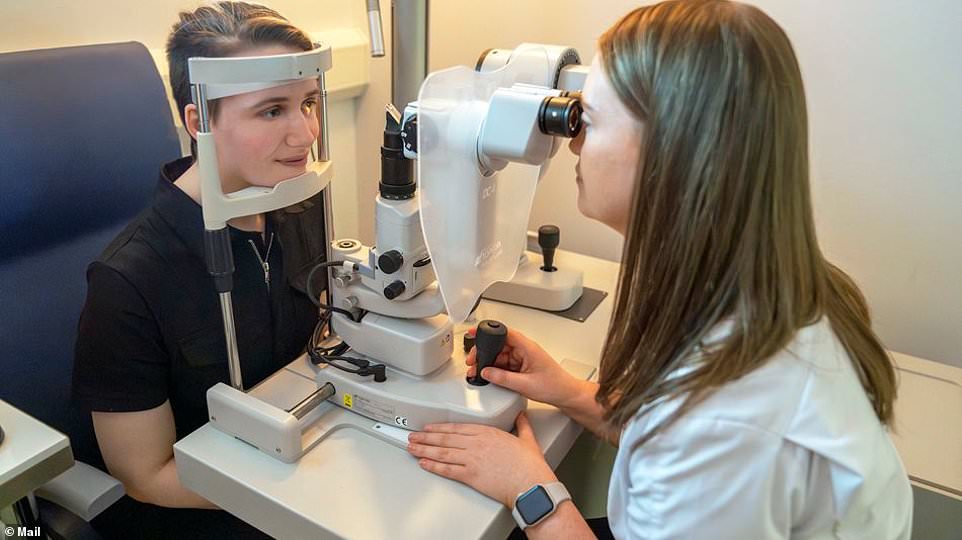
Overview
Glasgow Caledonian University (GCU) delivers on its founding mission to be for ‘the common weal’. It is our University of the Year for Graduate Jobs this year and was our Modern University of the Year in last year’s edition of this guide. It has been the top-ranked modern university (those founded since 1992) on both occasions. GCU has a relentless focus on achieving the best possible outcomes for students, many of whom come from backgrounds poorly represented on campuses elsewhere. Last September, GCU gave places to more than one in five of the total number of students admitted to Scottish universities from the 20% of postcode districts (SIMD20) considered to be the most deprived. For two years in a row, GCU has had the highest number of SIMD20 acceptances. Which makes the university’s achievements in the graduate jobs market all the more remarkable. GCU is among the top 20 institutions in the UK for the proportion of graduates who gain high-skilled jobs, beating many Russell Group universities to boot. It is one of the biggest providers of health, social care and life sciences graduates for the NHS; produces more building and surveying graduates than any other university in the UK; and is the only university to offer a full suite of optometry degrees. It is also Scotland’s largest provider of graduate apprenticeships, with eight programmes and 1,000 learners on campus.
36 (joint). Lancaster University

Overview
Lancaster University is one of the great success stories from the generation of universities founded in the 1960s. In the space of 60 years, it has forged an international reputation, attracting students from across the world to its Bailrigg campus on the outskirts of the small, pretty city of Lancaster. There was a record number of applications for courses beginning in September 2024 and only once has Lancaster admitted more students, putting the university’s finances in a healthier position than many institutions right now. Students join one of eight undergraduate colleges which divide the 13,000 undergraduates into bite-sized communities; the groupings are purely social rather than academic, but they provide an additional layer of student support in a university with one of the lowest dropout rates in the UK. Subject strengths range from medicine, engineering and the sciences through to social work, English, drama and creative writing. The Lancaster University Management School is also highly rated. There is a range of means-tested financial support as well as generous scholarships for academic achievement. The university is making rapid progress towards net zero with a programme of refurbishments (rather than carbon-heavy new builds), energy upgrades and the introduction of huge onsite sources of renewable energy.
38. Ulster University

Overview
Ulster is enjoying a boom in applications in the wake of it being named the Times Higher Education University of the Year for 2024, a few weeks after it was shortlisted for the Daily Mail University of the Year title. Its success is an acknowledgment of the institution’s transformation over the past decade, with it consolidating excellence in areas of existing strength while securing a foothold in new disciplines. Nothing demonstrates this better than the development of the university’s Belfast campus in the Cathedral Quarter, which has helped to regenerate a key part of the city and now hosts facilities such as the £75m Studio Ulster, Northern Ireland’s largest virtual-production studio. Belfast is one of the three campuses that make up the truly regional university. There are further outposts in Coleraine and Derry-Londonderry, as well as the university’s sports village in Jordanstown, seven miles outside Belfast. Ulster is committed to social inclusion on campus, with about 40% of students drawn from homes where parents did not attend university. It serves a predominantly Northern Irish student population, who make up 99% of the British intake. However, the university continues to recruit strongly from overseas despite the uncertainties caused by government policy on student visas.
39. Newcastle University

Overview
The lowest-ranked of the Russell Group of research-intensive universities, Newcastle is nevertheless experiencing record popularity with applicants and near-record admissions. Although it recruits nearly a quarter of its undergraduates from the North East – the English region with the lowest uptake of higher education – Newcastle has strong national appeal; applicants are attracted by both the university’s academic standing and the city’s reputation for enjoying itself. Its medical school is one of the best and the university aims to further advance its outstanding reputation in medicine and healthcare more generally – its biggest subject discipline. It has recently embarked on developing a £500m health innovation neighbourhood on the site of the former Newcastle General Hospital. This will build on the university’s expertise in healthy ageing by creating a living laboratory of intergenerational and later living with interdisciplinary primary healthcare focused on helping residents live longer, healthier lives. A raft of other capital projects and redevelopments on the city centre campus have been completed in the past year which will enhance the student experience. The university will hope these filter through to improved scores in the annual National Student Survey; underperformance here is primarily responsible for Newcastle’s disappointing ranking in this guide.
40. Swansea University

Overview
Swansea University boasts two seafront campuses to tempt students. The Singleton Park campus was joined by the Bay science and innovation campus ten years ago. Swansea challenges Cardiff each year to be the top-ranked university in Wales. It is placed in the UK top 25 for students believing their careers are on track 15 months after graduation. This pedigree attracts applicants from across the country, with half the intake drawn from over the Severn Bridge. The university is organised into three faculties – humanities and social sciences; medicine, health and life science; and science and engineering – and has a broad portfolio of courses that includes a graduate-entry medicine degree. Medical and healthcare students form the largest group on campus, with finance, sport science and social policy among the top performers in our subject rankings. Excellent sports facilities are second only to those at Cardiff Met in Wales. Last September admissions were at their lowest point in the past ten years. However, the university’s commitment to making offers to all UK applicants whose predicted grades fall within the offer range for a given course (with the exception of medicine, healthcare and social work) should put the university on the radar.
41. University of Essex

Overview
Essex is a university as distinctive as the Brutalist tower blocks that dominate its Colchester skyline. Since its founding in the 1960s it has ploughed its own furrow. A hotbed of student radicalism 50 years ago, Essex is still challenging the status quo. ‘We are Essex. Are you?’ the university demands of prospective applicants. It has built a global reputation in politics and the social sciences and has always attracted a high proportion of international students, which gives the campuses a cosmopolitan feel that belies their location on the Essex coast. Applications and admissions jumped by 11.3% and 18.9% respectively for the September 2024 admissions cycle – a trend the university would like to maintain after income fell by £17.6m in 2023-24, with a further shortfall expected for 2024-25. Students are split between three sites: the headquarters just outside Colchester; a second coastal campus at Southend-on-Sea, specialising in health and social care (an industry for which Essex now turns out large numbers of graduates) and business; and a third base in Loughton, North-East London, where the East 15 acting school is based. About one in five students benefits from financial support through bursaries, scholarships or hardship payments, with £5m paid out in 2023-24.
42. University of Bradford

Overview
Bradford is our University of the Year for Social Inclusion and makes our shortlist of five for the overall UK University of the Year title off the back of its strong performance across many of the ranking measures in our league table. The pursuit of social inclusion extends beyond admissions practices to permeate the curriculum and research focus of the institution. It’s evident in initiatives such as the Digital Health Enterprise Zone, which seeks to develop digital health innovations to improve the lives of people living with long-term conditions. One of the most diverse student populations at any university is well-supported financially and academically, and Bradford serves its region well, from which it draws 85% of its recruits. More than 70% of last year’s domestic intake were of Asian descent, with the university mirroring the ethnic diversity of the city it calls home. The university is helping the area to celebrate its status as the 2025 UK City of Culture, too. Bradford offers an extensive range of science, technology, engineering and health-related degrees, and a significant proportion of graduates go into the NHS, contributing to the university’s excellent graduate employment outcomes.
43 (joint). Keele University

Overview
Set on a parkland campus near Stoke-on-Trent, Keele offers a different university experience. There is a strong accent on sustainability and Keele was named Global Sustainability Institution of the Year at the Green Gown awards in 2021. It is consistently popular and has only twice admitted more students through Ucas than the 2,945 who gained a place in September last year. A multi-faculty institution, Keele has a significant presence in medicine and healthcare, which now accounts for around one third of admissions. A new veterinary medicine school operated with Harper Adams University, and a sports science degree, are among notable recent additions. All courses have a four-year option involving study abroad or a placement. Keele gained an overall gold rating in the latest Teaching Excellence Framework, making it one of just 15 institutions to do so in both 2023 and 2017. The responsive Access & Success bursary scheme invites students to pitch what they need financial support for rather than handing out a set sum. Like many other universities, Keele has experienced job losses in the past year, with humanities and social sciences bearing the brunt. However, no courses have closed, and the university says staff/student ratios remain favourable.
43 (joint). University of Plymouth

Overview
Plymouth is making a difference to the healthcare needs of the city and region it calls home while benefiting its students at the same time. The opening of the £5m Peninsula Dental Social Enterprise in September will offer appointments to local patients who do not have a regular NHS dentist. A year from now the university will open its Centre for Eyecare Excellence (CEE), also offering services to the public. In both instances, the facilities will provide outstanding spaces for students to work under supervision with professionals, typical of the university’s approach to higher education which sees real-world, hands-on experience embedded across all courses. The university punches above its weight for both the proportion of graduates in high-skilled jobs and the salaries they earn. Both CEE and the new dental clinic also demonstrate Plymouth’s commitment to serving the South West, from where it recruits more than half of its undergraduates. Admissions were down 10% in 2024 on the year before, leading to a £22m budget shortfall this year, which the university is seeking to plug while protecting student-facing services. Befitting an attractive coastal university, there are centres of excellence in marine and maritime subjects including microplastic pollution.
45 (joint). Teesside University

Overview
Our Modern University of the Year, which has climbed 13 places in our national ranking to sit 45th=, Teesside continues to build its profile nationally and academically. Another jobs-driven flagship development opened this year and the university is laying the groundwork for a planned medical school, too. The campus in central Middlesbrough, dotted with landmark buildings, is testimony to the university’s vision, creating something transformational in one of the country’s most unglamorous towns. Teesside is among the most socially diverse universities in the country, recruiting more than 80% of its students from the North East – the English region with the lowest uptake of higher education. This makes its free iPads 4 All policy all the more impactful. Students appreciate the help they receive from academics and the university more widely, ranking Teesside in the UK top ten in this year’s National Student Survey for student support. Shortlisted for our UK University of the Year title in 2023, Teesside has found favour in academic assessments, too. It achieved a rare triple gold in the latest Teaching Excellence Framework – for student experience, student outcomes and overall rating. And in January, Ofsted rated the university’s extensive graduate apprenticeship provision (comprising around 40 programmes) as outstanding in every category, praising both the quality of teaching and the strength of the partnerships with industry that support apprenticeship delivery. There’s a satellite campus in the Queen Elizabeth Olympic Park in London offering a limited range of business, computing, cybersecurity and computer games programmes.
45 (joint). University of Reading
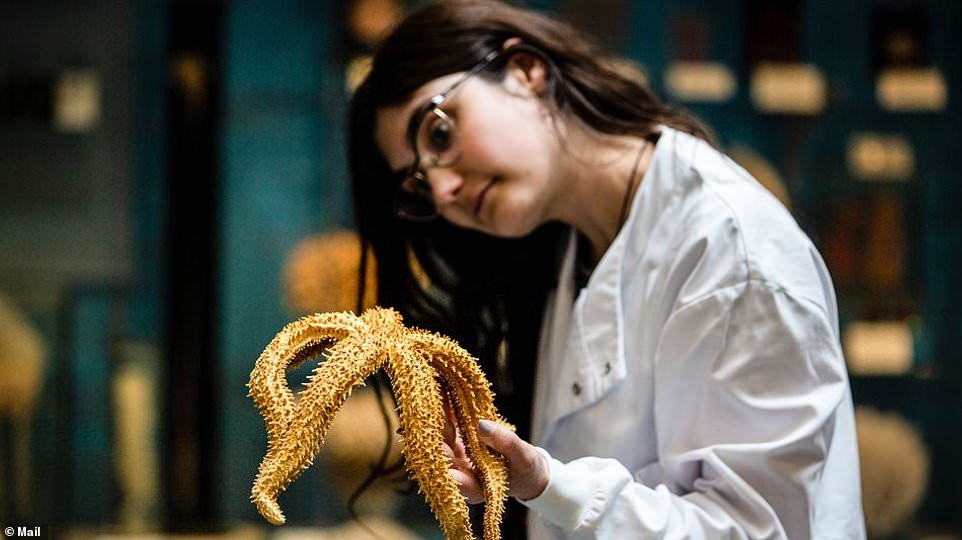
Overview
Reading’s pitch to be the go-to destination for the environmentally conscious steps up a gear this year with the introduction of £6,000-a-year global sustainability leaders scholarships. These are open to UK and international applicants in any subject who achieve at least AAA at A-level (or AAB if they qualify for a contextual offer). Reading wants to develop the global sustainability leaders of the future by offering students leadership and development opportunities during study. Reading is already one of the top universities for meteorology and climate change studies and sits fourth in the People & Planet rankings for its environmental and ethical performance. Approaching its centenary in 2026, Reading is in a good place with record numbers of applications and admissions. It is a popular choice locally, with about 60% of UK students hailing from London and the South East. The main 320-acre Whiteknights campus offers a sense of calm in this busy commuter town, but the university’s estate also encompasses 2,000 acres of farmland and the smaller London Road and Greenlands campuses, the latter home to Henley Business School. By some distance, business and management is Reading’s largest subject area, with an excellent reputation for agriculture and animal sciences, too.
47. Harper Adams University
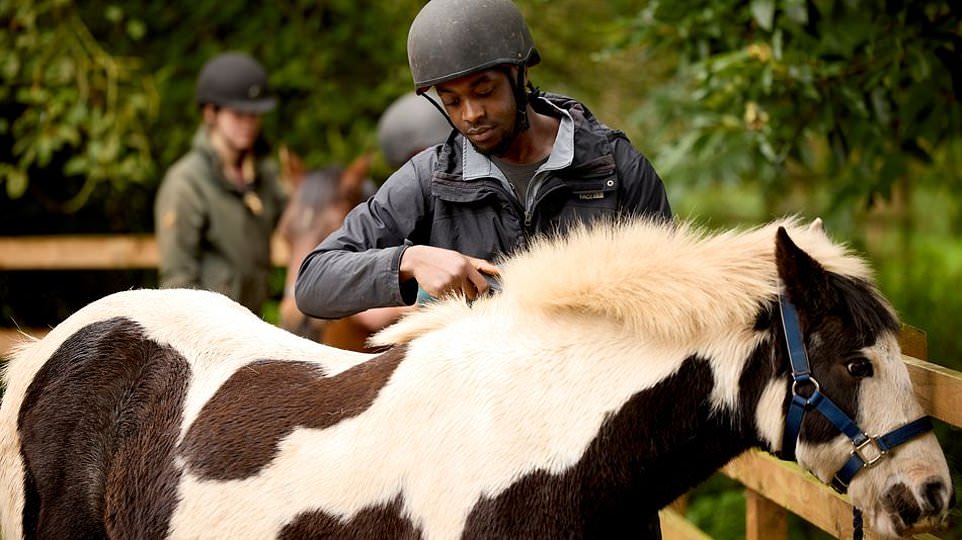
Overview
Harper Adams is one of the leading specialist universities and a jewel in the UK higher education system. If you are looking to acquire an outstanding land-based education and a future career in farming, Harper Adams has to make any shortlist of potential destinations. Located in the Shropshire countryside, it offers a very different university experience to the norm and is about as far away from the big, bright city lights as you can get. Most courses contain a placement year and it has an excellent graduate employment record – with only Imperial College London having a higher proportion of graduates who feel their career is on track 15 months after leaving. A Harper Adams student has been named Dairy Student of the Year by the Royal Association of British Dairy Farmers for ten of the past 11 years. The university’s dairy unit is typical of the state-of-the-art facilities from which students benefit. The rotary milking parlour with computerised cow identification has capacity for 400 cows which are milked three times a day. The university farm contains dairy, beef and pig units, two flocks of sheep, poultry facilities and hectares of arable and grassland given over to research projects.
48 (joint). Manchester Metropolitan University

Overview
Manchester Metropolitan is shortlisted this year for our University of the Year title after another jump up our rankings and outstanding ratings from its students for the support they receive and their wider student experience. No British university admitted more undergraduates than Manchester Met in September 2024. More than 11,500 students got a place, 11,000 of them from the UK. Situated in the heart of the city, Manchester Met is consistently one of the highest-ranked modern universities (those created since 1992) and a £400m campus investment programme over the past decade has provided students with modern facilities and industry-standard equipment. The university offers a broad and largely vocational course portfolio, with business and management hoovering up more than one in five students. It also has a strong presence in nursing and healthcare, creative and performing arts, and computing. A £4.5m success fund should offer financial support to a wider range of students, and the university runs a bespoke outreach programme across the region to attract applications from families with no history of higher education. The university is one of the biggest providers of degree apprenticeships, with 2,740 apprentices working across 17 pathways in September 2024. The university partners with more than 700 UK employers for these programmes, which were rated outstanding by Ofsted in both 2018 and 2022 – making Manchester Met the first university offering degree apprenticeships at scale to achieve this double success.
48 (joint). Royal Holloway, University of London

Overview
The University of London’s campus in the countryside, Royal Holloway admitted a record number of undergraduates in September 2024 after receiving the second-highest number of applications ever. It is perhaps best known for its iconic Founder’s Building, set in 135 acres of parkland outside Egham, Surrey. It is one of the smaller universities within the University of London federation, with around 10,000 undergraduates, mostly recruited from London and the South East. It aspires to be a ‘university of social purpose’ as set out in its strategy document, tackling global challenges while staying true to its core values of being open, respectful, daring and innovative. The university began life as two colleges exclusively for women, and it works hard to maintain its ethos of providing equity in opportunity today. Bursary, scholarship and hardship support ran to just under £5.4m in 2023-24, with about one student in three benefiting. Very few drop out thanks to a highly supportive academic environment, and a high proportion leave with a first or 2:1. Meta-skills are embedded into the curriculum – which include collaborating and critical thinking- and an employability framework offering placements, mentoring, volunteering and entrepreneurial activities helps students maximise their options in the graduate employment market.
48 (joint). University of Hull

Overview
Hull has long offered a great university education for eminently achievable grades. Like the city it stands in, the university is sometimes overlooked for more ‘fashionable’ destinations, but students who come here are usually passionate about their choice. In recent years this has translated into good scores in the annual National Student Survey, boosting the university’s rankings. Hull attracts a diverse intake, with well over half the students being the first in their family to go to university. Business, health and social science courses are among the most popular, with its British politics degree arguably the signature dish and a generator of many a Westminster career. Hull will hope to bounce back from its experience in the 2024 admissions cycle, after being one of the universities hit hardest by the decision of some Russell Group universities to admit thousands of students with lower A-level grades than usual. It saw a near-25% year-on-year fall in admissions. For the cost-conscious student, however, Hull is a winner. The city is one of the most affordable in the UK and the university has played its part, with a near-20% cut in the price of its cheapest residential accommodation this year.
51 (joint). Northumbria University

Overview
Northumbria University has lift off! The North East Space Skills and Technology Centre (NESST) will open next year, the product of a £50m investment to bring together industry and academia to work on internationally significant space research and technological developments. This new institution is a sign of Northumbria’s steadily acquired research clout and a modern university that is taking on the old guard. There will be spin-offs for undergraduates, too, with new courses and the presence of world-leading academic expertise. These are good times for Northumbria, named our Research University and Modern University of the Year two years ago. Applications and admissions were up by a healthy amount for courses starting in 2024, when 56% of the intake was drawn from the North East and 17% from Yorkshire and Humberside. Northumbria is a key player in the regional economy, getting more graduates into skilled jobs in the region than any other university, including local Russell Group rivals Newcastle and Durham. It’s a good destination for budding entrepreneurs as well. It also ranked fourth in the UK in 2023-24 for graduate start-ups based on their estimated turnover – the 16th successive year where Northumbria has been placed in the top ten.
51 (joint). University of Hertfordshire

Overview
The planned opening of the new medical school in September 2026 will be a big moment for the University of Hertfordshire, making it the latest modern university to acquire one of the key status symbols of the old guard. If you are a UK student, you can’t apply right now; the first intake will be made up of 70 international students. However, the plan is to open the school to UK applicants in the near future. It is a natural development for a university in which just under one-third of the undergraduate intake already opt for nursing and allied health and social care courses. Business, computing and engineering are big here, too – the latter is especially appropriate for an institution partly housed on the site of the old de Havilland aircraft factory. The de Havilland campus and the nearby original College Lane campus are both in the commuter town of Hatfield, 25 minutes from central London by train. The university recruits strongly from the immediate local area, and the student population reflects the social and ethnic diversity of its main recruiting ground. However, admissions are running at half the level they were pre-pandemic and applications have fallen by a similar proportion over the past decade.
51 (joint). University of Portsmouth

Overview
Portsmouth took radical action last September by admitting close to 1,000 more students than the year before following a £20m fall in tuition-fee income between 2023 and 2024. The surge comes as the university shakes up its curriculum and course delivery and assessment to better equip its students for working life beyond university. The connected curriculum will be rolled out from 2026, but connected degrees are already here, which offer students flexibility around their placement year. Traditionally it slots in before the final year of study, but Portsmouth now gives students the option of taking it after. It opened a second campus in the capital in 2024, offering a limited range of undergraduate degrees such as business and management, computer science and economics. The Walthamstow campus is expected to grow. The university has ambitions to be the top-ranked modern university (those founded since 1992) by 2030 and already features consistently in the top ten among that group, ranking eighth this year. Its main campus in Portsmouth is home to more than 20,000 students, three-quarters of whom come from London and the South East. The busy port city and the beaches of Southsea, where many students live, offer a great backdrop to student life.
54. London South Bank University

Overview
Shortlisted for our University of the Year award in 2024 and also named as the University of the Year for Social Inclusion last year, London South Bank University (LSBU) knows what it is about. Founded in 1892 to ‘effect social mobility for the people of South London by improving their employment opportunities and providing access to the applied knowledge that would advance their businesses’, that mission is largely unchanged today. And it succeeds in delivering it – with LSBU graduates among the best paid in the country and overwhelmingly in high-skilled jobs. Two-thirds of students are on courses sponsored by more than 2,000 employers and the 2,300 graduate apprentices on campus represent one of the biggest populations of their kind. More than 80% of its domestic intake are drawn from the capital and of last year’s UK intake 43.1% were of black heritage, the ethnic group least represented on campuses. LSBU is headquartered in Southwark, with two further campuses in Croydon (for business and healthcare students) and Havering (for adult and mental health nursing students). Healthcare students are by far the largest subject population at LSBU and the opening of the Centre for Health, Injury and Performance has considerably enhanced their experience, offering new immersive suites.
55. Edinburgh Napier University

Overview
Edinburgh Napier University (ENU) supplies just short of 1,000 nurses and midwives each year to the NHS, educated in the university’s Clinical Skills and Simulation Centre, which offers some of Scotland’s best training. ENU is the only Scottish university with degrees in all four nursing specialisms – adult, children, learning disability and mental health – and the guaranteed job outcomes at the end help ENU to have one of the stronger modern-university performances in the graduate employment market and a healthy ranking in guides like ours. It is set on three campuses in the west of Edinburgh – Craiglockhart, Merchiston and Sighthill – which are home to 15,000 students, the majority of whom are from Scotland. While the university has a strong public-sector jobs pipeline, it also has an excellent record for encouraging entrepreneurship. It sits in the top ten in the UK and is second in Scotland for generating spin-out companies from its research, according to a 2023 report from Octopus Ventures, an investor in tech start-ups. About 700 business start-ups have been supported by the university’s enterprise incubator, Bright Red Triangle, since 2014. ENU has a strong presence in business, the arts and creative industries, applied sciences, computing, engineering and the built environment.
56 (joint). Staffordshire University

Overview
Staffordshire University’s new student village will open in time for the September 2026 undergraduate intake. The £100m investment will provide a significant lift in both the quality of facilities and the student experience, from which the university will hope to reap a dividend in the form of improved scores in the annual National Student Survey. With more than 700 ensuite rooms, the village on Staffordshire’s main Stoke-on-Trent campus has been designed as a net-zero carbon development, powered by solar panels and heat pumps. The university is consistently among the highest-ranking modern universities founded since 1992. It has an outstanding record on recruiting students from families with no history of higher education, who are then prepared well for working life. The near-three-quarters of students who land high-skilled jobs upon leaving is one of Staffordshire’s top-performing indicators in our ranking. And, with 22 degree apprenticeship pathways, the university is more than delivering on this strategic institutional priority to provide a debt-free higher education to significant numbers of students. More than half the intake are from the West Midlands, but significant numbers are now recruited from London – most of them attending Staffordshire’s Here East campus in the Queen Elizabeth Olympic Park. Staffordshire’s newest campus is home to the university’s digital institute and courses including cyber security and cloud and network computing. Another campus is based in Stafford, where most nursing and healthcare courses are based.
56 (joint). University of Suffolk

Overview
The University of Suffolk (UoS) – which won our Community University of the Year award last year – has been voted University of the Year by its own students at the 2025 Whatuni Student Choice Awards. Students praised UoS for its facilities, friendliness, career opportunities, work placements and diversity. UoS has been an independent institution since 2016, serving a swathe of East Anglia that is poorly provided for in terms of higher education. This is reflected in the fact that nearly three-quarters of undergraduates are the first in their immediate family to go to university and just under two-thirds are mature students aged over 21 when they begin their courses. The focus on vocational courses translates into significant numbers of students landing high-skilled jobs. Although there are UoS outposts in places like Great Yarmouth, the university is headquartered in Ipswich on the attractive Waterfront campus – home to most courses. A new Student Hub is being created at the heart of this campus and will be open to students arriving next September. The university is ramping up its degree apprenticeship provision, adding nine programmes over the next year including environmental practitioner, data scientist and construction site manager.
58 (joint). University of Huddersfield
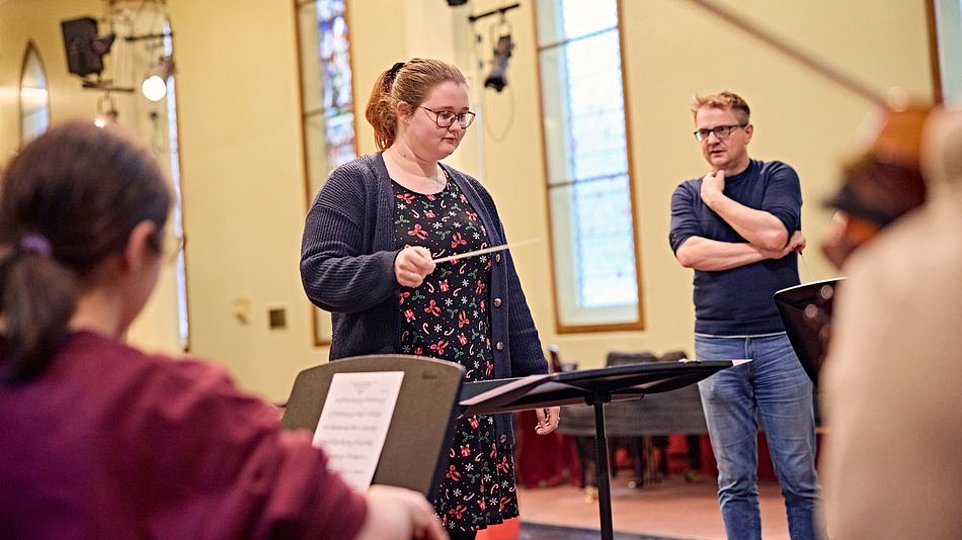
Overview
The expansion of Huddersfield’s healthcare provision continues to gather pace. The multiple subjects in this field already occupy around a quarter of undergraduates and most of the university’s degree apprentices – now the development of the National Health Innovation Campus (NHIC) gives them facilities to match their hard work. The first NHIC building, the Daphne Steele Building – named after the first black matron in the NHS – was opened in September 2024. Now a second key piece of infrastructure, the Emily Siddon Building – honouring the only woman on the leadership team at Huddersfield’s first infirmary – is due to open in December this year. The university will hope that the flagship NHIC project will attract more students to the university after applications and admissions fell to a ten-year low for courses beginning in September 2024. The loss of 198 jobs and the closure of degree programmes in the likes of geography, maths and sociology will not have helped. The university recruits heavily from both sides of the Pennines and 93% of last year’s intake came from Yorkshire and the North West. The intake is diverse, with almost half being of Asian heritage and even more who are first-generation university students.
58 (joint). University of Wolverhampton

Overview
The University of Wolverhampton has big ambitions – namely to open a new medical school (still a relative novelty in modern universities founded since 1992) in time to admit its first students in September 2026. To get to that point, the university has unveiled plans to transform its City campus in Wolverhampton, which include demolishing the Brutalist School of Art building. It also intends to close its Telford campus and move the university’s nursing students to its City and Walsall campuses. Even before the addition of a medical school, nursing and other health-related courses accounted for more than 43% of the student intake in September 2024. This helps drive excellent employment prospects for Wolverhampton graduates, nearly three-quarters of whom end up in high-skilled jobs. This is particularly significant for a university that does more for social mobility than most. Seven in every 10 students come from homes where parents did not attend university; more than half of last year’s intake were of Black or Asian heritage; and mature students make up more than a third of the student body, encouraged back into education by Wolverhampton’s flexible admissions policies. The university serves a largely local intake, with 85% coming from the West Midlands.
60 (joint). Robert Gordon University
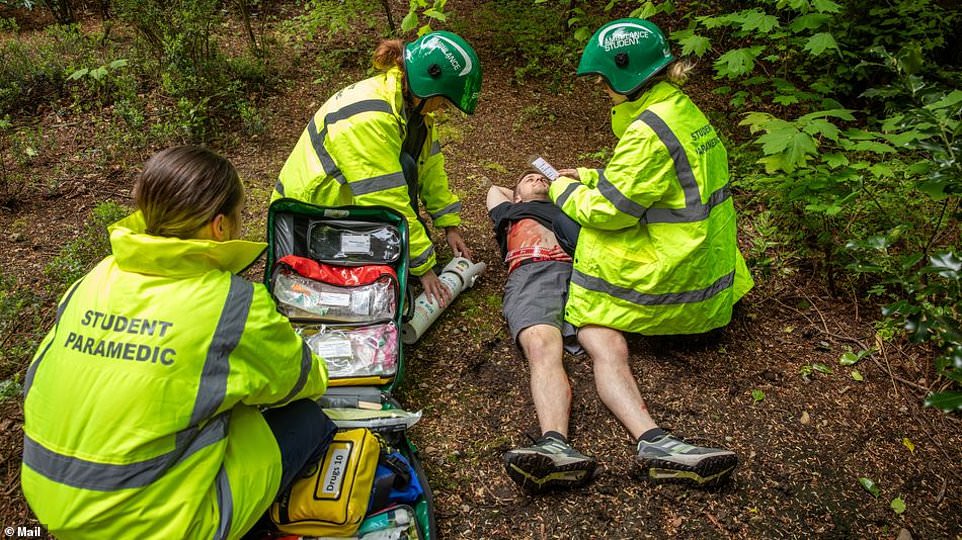
Overview
Exceptional graduate employment statistics make a compelling case for applicants to consider Robert Gordon University (RGU), making the downturn in applications to this vocationally oriented institution hard to fathom. Admissions via Ucas in 2024 were at their lowest in the past ten years, but those who sign up for this mid-sized university, based in Aberdeen, find it is four years well spent. Four in five end up in high-skilled jobs – many of them having met their employer during the work placements that are integral to many courses – and a similar proportion believe their careers to be on track 15 months after leaving. Healthcare students account for about a third of the student body. The university performs strongly in the National Student Survey. RGU occupies a modern riverside campus close to the centre of Aberdeen; Garthdee is home to around 10,000 undergraduates and 5,000 postgraduates, including a 680-strong population of graduate apprenticeship learners. Scotland’s third-largest city is a popular student destination, no longer as expensive as during the Oil City boom years, and is also the winner of 11 consecutive Purple Flag awards for having a safe nightlife. The surrounding coast and mountains offer endless possibilities for the outdoorsy, too.
60 (joint). University of Salford
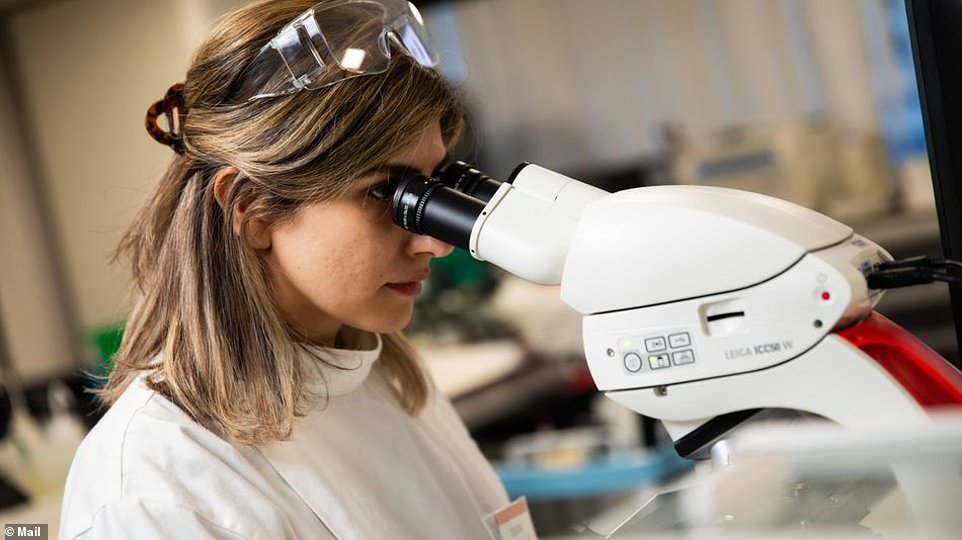
Overview
Salford is hugely popular with students in Greater Manchester and the immediate surrounding region from which it draws three-quarters of its intake. The university is in the throes of a major upgrade – the most ambitious in its history – under a campus connectivity plan which will deliver new teaching, research and public spaces. A health and wellbeing building, due to open in time for the 2026 student intake, is at the heart of the revamp. A socially diverse population is supported by the university’s approach to financial support, which is universal rather than being targeted at the few. All students get a £150 annual credit to spend at an online learning resources store to help cut the costs of studying. Salford is one of three universities that effectively share a huge student quarter just off Manchester city centre. The university works closely with industry, building expertise in robotics, automation systems, and digital and smart living. It has a strong presence in nursing and healthcare and has also gained a good name in media and television courses, benefiting from its proximity to MediaCity, which has one of the biggest concentrations of studios outside London.
60 (joint). University of Stirling

Overview
Eight University of Stirling-based swimmers competed at the Paris Olympics last summer, bringing home three medals: Duncan Scott earned a gold and a silver (and is now Scotland’s most-decorated Olympian), while Jack McMillan also won gold. Scotland’s University for Sporting Excellence is getting used to this level of success. ‘Sport is part of our DNA here at Stirling,’ says David Bond, head of performance sport. As well as outstanding facilities, which include a 50m pool, the campus is criss-crossed with cycling and running paths to encourage those with more modest sporting ambitions. The campus can lay claim to being the most beautiful in the UK. Indeed, the International Student Barometer last year judged it to be the third-best campus environment in the world. Set around Airthrey Loch, with the Ochil Hills as a backdrop and a castle in the grounds, students have no complaints about their surroundings. Even the 1960s architecture is impressive, with some now being Category A-listed. Courses retain a broad-based approach across the first two years of study before specialising in the final two years of study and often offer a choice of September or January start dates.
63. University of Sussex
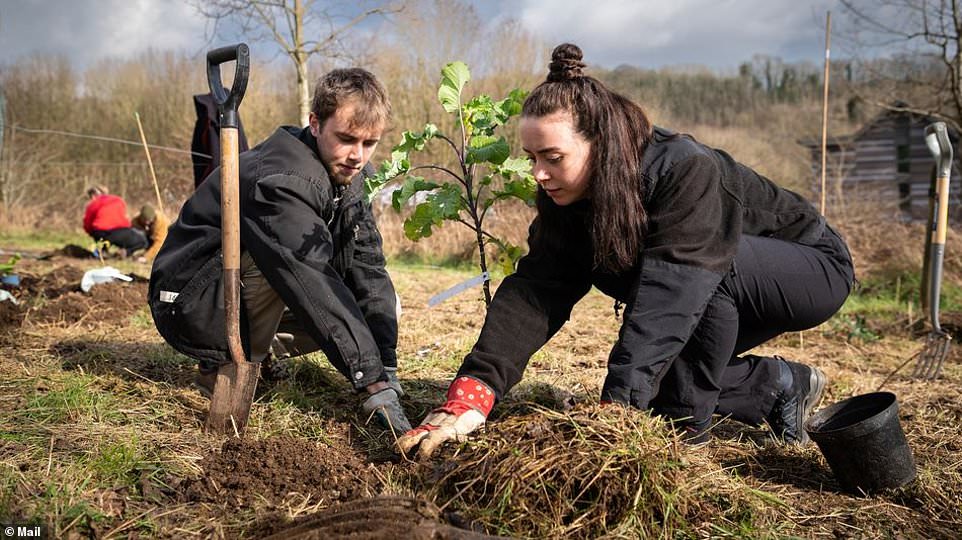
Overview
Sussex has developed several 15-credit modules that can be taken across a variety of degrees, all designed to increase knowledge and understanding of key sustainability issues and practices. Five Climate Leaders scholarships are offered every year, worth £5,000 per year of study, for students wanting to boost community engagement around climate change. And the next generation of climate-change activists can apply to Sussex’s new BA in climate justice, sustainability and development, which is recruiting its first students in the new admissions cycle. The university is practising what it preaches, committing to giving more than 42% of the land on its Sir Basil Spence-designed campus, which borders the South Downs, over to nature by 2027. One of the 1960s generation of universities, Sussex has plenty of the distinctive architecture for which the period was renowned, but there are also 2,000 new student rooms under development to help keep the university fresh and modern. A beefed-up student support model recently won recognition from the UK Advising and Tutoring Association. The university’s Brighton location is a hit with students, putting them at the heart of one of the country’s most fashionable seaside resorts yet less than an hour from the capital.
64. Abertay University
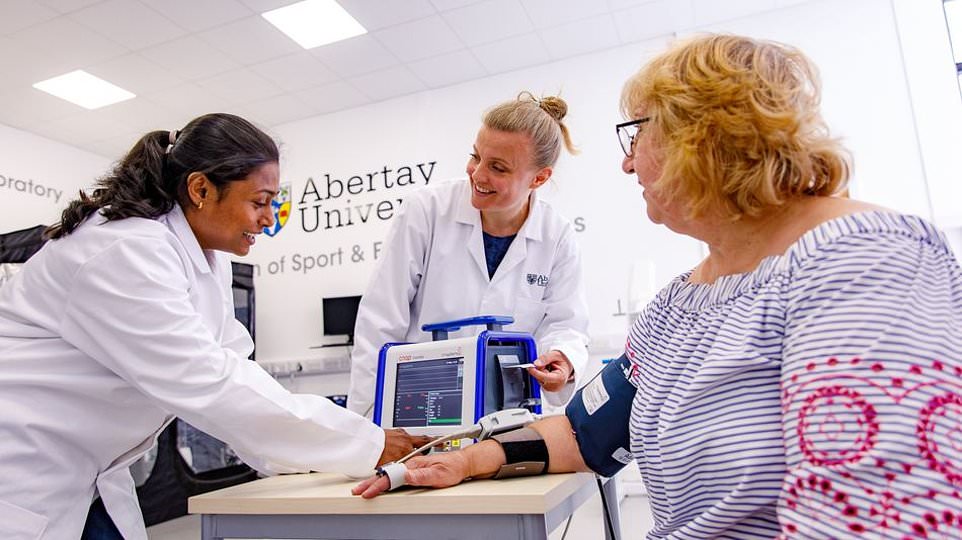
Overview
Abertay was named UK Cyber University of the Year at the 2024 National Cyber Awards – the latest accolade to highlight this small university’s domestic and international pre-eminence in a critically important field. Abertay has been at the forefront of computing innovation since 1997 when Dundee-born David Jones, the creator of the game Grand Theft Auto, helped set up the world’s first computer gaming degree. Today, computing-related courses make up eight of the 47 undergraduate degrees on offer, with further courses largely focused on accounting, business management, food, psychology and sport and fitness. This compact range of courses has seen recruitment shortfalls in both the 2023-24 and 2024-25 recruitment cycles, but Abertay’s financial position is positively healthy compared to that of its city neighbour, the University of Dundee. The number of applications for admission in September 2024 was actually 10.7% up on the previous year, with about 90% of entrants recruited from Scotland. Based in the centre of Dundee, Abertay is well aware of its key strengths – being small, modern and supportive. The last of those was reflected in the 2024 National Student Survey, where it was ranked top in Scotland for student support in our analysis of the results, although results dipped a little this year.
65 (joint). Edge Hill University
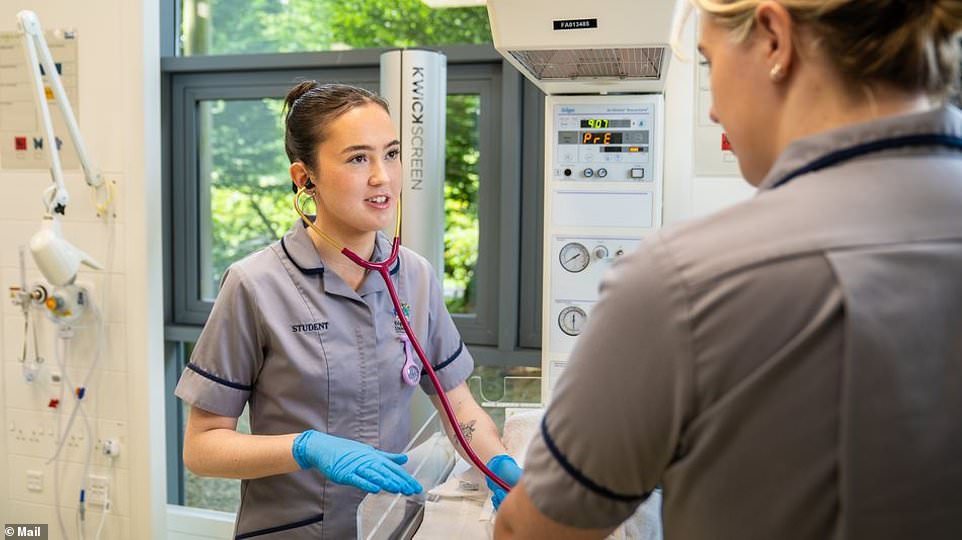
Overview
Edge Hill (EHU) is our University of the Year for Student Experience. Outstanding results for student experience in this year’s National Student Survey showed that students have woken up to the outstanding quality of the academic, social, sporting and residential environment to be found on their self-contained campus on the fringes of Liverpool. Heavy investment over the past decade has seen EHU transformed from an institution best known for teacher training into one of the most modern and vibrant universities in the UK with a diverse portfolio of courses. That it still appeals largely to a local audience in the North West is the rest of the country’s loss and the North West’s gain. Edge Hill is one of just 12 modern universities (those created since 1992) to have its own undergraduate medical school. It also has £50m of newly opened academic, social and residential developments, and sets out one of the most joined-up approaches to making university accessible – and easy to succeed at – for all. The campus is leafy and green and has excellent sports and cultural facilities. It sits on the edge of Ormskirk, a small Lancashire town, and is a 36-minute train ride from Liverpool and its cultural, sporting and nighttime distractions. With highly competitive offers for places, Edge Hill is a bargain – providing high-quality education and outcomes for medium-tariff grades.
65 (joint). Nottingham Trent University

Overview
Nottingham Trent University (NTU) is our Sports University of the Year. It has ranked among the top ten institutions in inter-university competition for the past four years. No modern university has a comparable record. It also encourages students of all abilities to make sport part of their life through innovations such as the NTU Moves app. There is a large audience for these efforts as NTU has recruited more than 10,000 undergraduates in each of the past six years, making it the most prolific source of graduates in the UK. Its portfolio of largely vocational degrees delivered in a popular student city is a winning combination. Financial support targets the many not the few, with the main £750 NTU bursary reaching around 9,000 students every year. NTU was the first university to sign the Social Mobility Pledge and about four in every ten students come from homes where parents did not go to university. It is in the midst of a £250m campus investment programme running until the end of the decade, with the new design and digital arts building opening last year. There are several campuses – City is home to six academic schools; Clifton houses engineering, healthcare and sport students; and Brackenhurst is a 500-acre countryside site for animal, rural and environmental sciences and NTU’s veterinary nursing centre. There are further sites in London and Mansfield.
67. University of the West of England

Overview
The University of the West of England (UWE) is one of the country’s largest universities with more than 35,000 undergraduate and postgraduate students. It has campuses across Bristol, with the biggest – the Frenchay campus – north of the city centre. There is also the City campus and a third, Glenside, which is in the Fishponds district. More than half of its UK intake come from the immediate region, but a further 24% come from London and the South East, demonstrating its wider appeal. Nursing and healthcare, business and the creative arts are the main subject areas, but there is a strong presence in engineering, technology and computing, too. The City campus is home to creative and cultural industries courses. It features the Arnolfini and Spike Island arts venues, and the Watershed film culture and digital media centre. The Glenside campus, a short bus ride from the city centre, is the base for allied health, social care, nursing and midwifery students. There is a package of support available for students from low-income households, including employability bursaries worth £500 or £1,000 to help meet the costs of placements, summer internships or other activities that will enhance graduate job prospects – the university’s second strongest-performing measure in our ranking.
68 (joint). Coventry University

Overview
Coventry has expanded rapidly in recent years and now trades with the commercial business-like title of Coventry University Group. This reflects a university with multiple locations – Coventry University and Coventry University London at home and Coventry University Wroclaw in Poland; a global hub in New Delhi, India; and a new branch campus in Astana, Kazakhstan, abroad. The Coventry University Group title also reflects an institution that provides different student experiences – any campus that just has University in the title offers something traditional, while any campus with CU in the title (CU Scarborough, CU London and CU Coventry) offers a one-module-at-a-time flexible university-lite experience for those juggling multiple commitments alongside studying. The course portfolio is in a state of constant flux, with dozens of degree options added each year to reflect the latest market trends. One of our largest universities, with about 38,000 undergraduates and postgraduates, few can boast Coventry’s record on social inclusion – six in ten students are admitted under its Fair Access Scheme. After posting a £60m deficit in 2023-24, the university is predicting a return to profitability in the 2025-26 financial year after cutting a forecasted £95m from its budget over two years, along with some academic positions.
68 (joint). University of Lincoln

Overview
Lincoln’s medical school is set to become independent from September 2026. Students enrolling for the university’s medicine degree in the new application cycle should be the first to take a medical degree here awarded by the University of Lincoln, subject to approval from the General Medical Council. Since the university’s medical school was created in 2018, degrees have been validated by the University of Nottingham, despite being studied at Lincoln. With 100 places available (80 for medicine and 20 more with a gateway year), it is a significant moment for the university. It’s welcome good news amid continuing threats to academic jobs due to ‘financial headwinds… [that] have not gone away’, as the university put it earlier this year. Lincoln was among those hit hard after some Russell Group universities admitted hundreds of students last September with lower grades than they would normally take, contributing to a 15% drop in admissions. Lincoln recruits around two-thirds of its students from the East Midlands and East Anglia – mostly to its Brayford Pool campus, which successfully mixes old and new on an attractive waterfront site. There is a second campus at Holbeach, which is home to the National Centre for Food Manufacturing. It offers part-time courses, mostly to food-industry employees.
70 (joint). Oxford Brookes University

Overview
Students enrolling at Oxford Brookes University (OBU) in September will be joining a newly united university. The transfer of the library and all teacher training activity from Harcourt Hill over the summer, on top of the closure last year of the Wheatley campus, means that (apart from a nursing campus in Swindon) all teaching has now been consolidated at Headington Hill. There has been much development to cope with the influx of students. A new teaching site opened last year, a workshop building opens for the start of the 2025-26 academic year, and the Clive Booth student village has seen the addition of three new accommodation blocks in the past 21 months. Oxford Brookes has one of the best graduate employment records of any modern university, with around three-quarters landing highly skilled jobs, although applications through Ucas have been declining and hit a ten-year low in 2024. OBU was the first UK university to introduce the internationally recognised Grade Point Average (GPA) system alongside the standard UK degree classifications. The maximum score of 4.0 is based on all three years of studying, and not just on assessments in year two and three, as is the norm in the UK.
70 (joint). Plymouth Marjon University

Overview
Plymouth Marjon regularly aces the annual National Student Survey (NSS), success that is built on a supportive environment and one of the smaller student populations in the UK. Some 2,000 undergraduates study here, allowing each of them a degree of individual attention that is simply not possible in larger universities. Marjon scores well in all three NSS areas we analyse for our ranking – teaching quality, student support and student experience. And it backs this up with its strong showing in the 2023 Teaching Excellence Framework, where it won gold for its overall rating. The university has a curious history stretching back 185 years, starting out as two teacher training colleges based in London. They merged more than 100 years ago and moved to Plymouth in 1973. Teacher training is still an important part of Marjon, but it has a strong presence in sport – academically and on the pitches – and a growing band of healthcare students. They will benefit from the opening of the Marjon health and wellbeing hub in September, which features clinical skills, diagnostic and simulation laboratories. The development will also further endear the university to the local population with community health clinics where students will work alongside medical professionals.
70 (joint). University of West London

Overview
The University of West London (UWL) aims to make university an attainable goal for the widest possible audience. It boasts ‘social inclusion is in our DNA’ – and the evidence on campus supports this, with 60% of students aged over 21 when they began their courses in 2023-24 and 48% drawn from ethnic minorities. More than half are recruited from areas with the highest levels of social deprivation, too. UWL is a previous winner of our University of the Year for Social Inclusion title. Getting its diverse student body into meaningful employment is achieved by working with employers, local authorities and professional bodies. It’s no accident that UWL markets itself as the Career University – it has close ties with major employers such as British Airways, the Metropolitan Police and De Vere Hotels. Its business links give students access to more than 1,000 part-time, internship, graduate and volunteering opportunities, and UWL’s careers service makes a lifetime commitment to its students. The number of degree apprentices at the university is expected to reach 1,500 by September 2026, making UWL one of the biggest providers of this debt-free form of higher education. A further seven options will be added to the portfolio of the existing 25 degree apprenticeships in the next year.
73. Liverpool John Moores University

Overview
Liverpool John Moores University (LJMU) plays a vital part in the educational landscape of the Liverpool city region. It recruits 38% of its students from the area, which contains some of the districts with the lowest rates of participation in higher education in the UK. Applications for admission in 2024 dipped below 30,000 for the first time in the past decade but the number gaining places held up well. There are two campuses: Mount Pleasant, home to the faculties of business and law, and arts, professional and social studies, and City where health, science, and engineering and technology students are based. It offers more than 200 undergraduate degrees spanning most academic disciplines, and 22 pathways for degree apprentices. The faculty of arts, professional and social studies is the biggest, but healthcare subjects saw the largest number of undergraduate admissions in 2024. The university’s supply line of graduates into the NHS and other public-sector areas contributes significantly to the 70% who go on to gain high-skilled employment. LJMU is the most popular English university with students from Northern Ireland, with more than 500 enrolling in 2024. It holds bespoke applicant days in Belfast and runs a customised induction programme.
74 (joint). Aberystwyth University
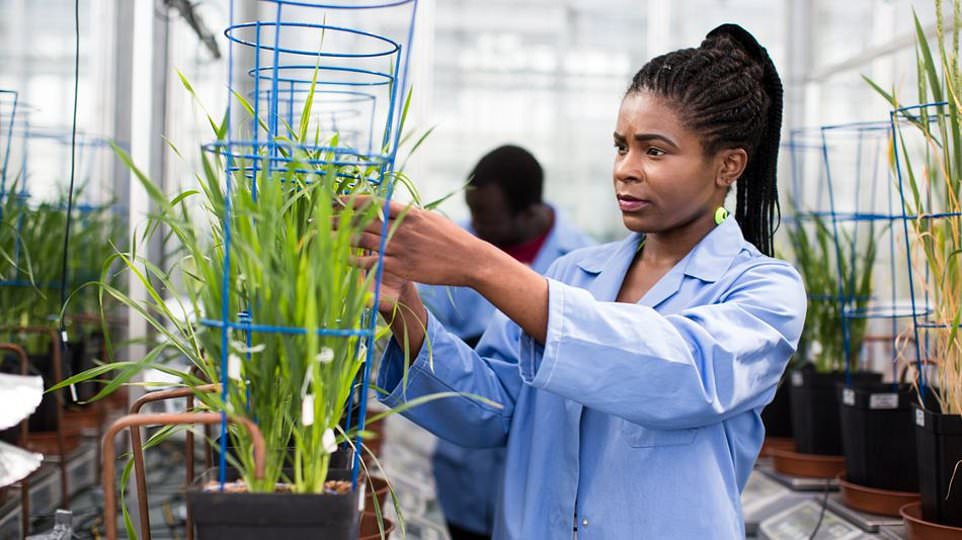
Overview
In a world where one university looks pretty much like the next, Aberystwyth, our Welsh University of the Year, offers something different. Perched on the west coast of Wales, Aber (as it is known to its cohort) takes a while to get to, but once students are here they love it. They are fiercely loyal and rate their academic and social experience highly, as evidenced by a run of outstanding scores over recent years in the annual National Student Survey (NSS), which measures student experience, support and satisfaction with teaching quality. The message is getting around, with the university receiving a record number of applications in September 2024 – more than 10,500, which was 14.5% up on 2023. Less than a third of the domestic intake comes from Wales, with the university recruiting strongly across England – in particular from the West Midlands and the South East. It remains one of the smaller universities in this guide, but the nightlife is lively and there are more than 100 student societies and 50 sports clubs. Sports facilities are excellent, too. The student accommodation village is situated a short walk from the main Penglais teaching campus and many students take advantage of the beaches, hills and surrounding countryside as they immerse themselves in Welsh life.
74 (joint). SOAS University of London
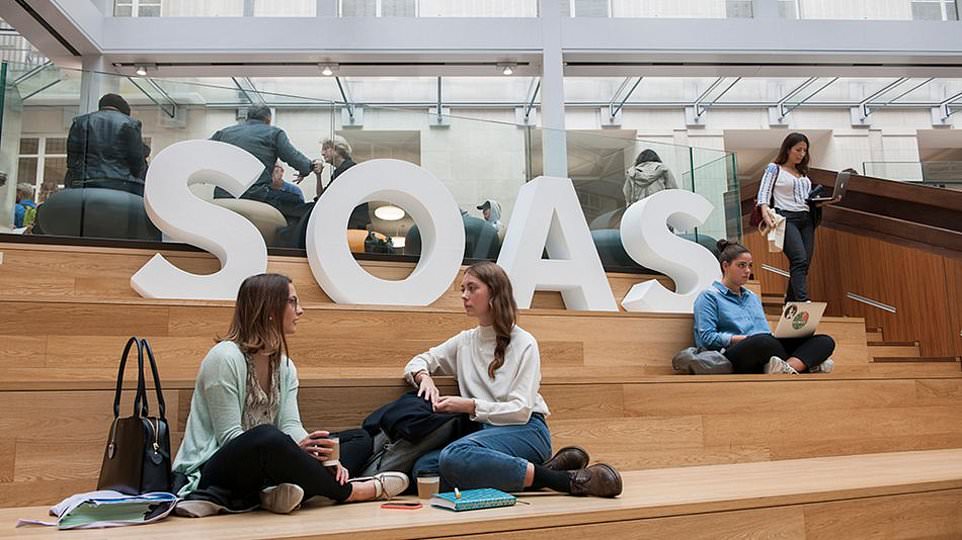
Overview
Soas is in a good place. Its income, surplus and net cash inflow from operating activities were all up in 2023-24 when so many other universities struggled. The 2025 edition of the QS World University Rankings rated Soas second in the UK for its ability to attract top academic talent from around the world. And the university enjoyed a record number of applications and admissions for courses beginning in September 2024. The number of freshers admitted through Ucas was 128% higher than in 2018 at 1,675. Its popularity can be put down to the geographic focus of its courses, spanning Africa, Asia and the Middle East, which together encompass many of the world’s greatest contemporary economic, political, environmental and strategic challenges. Many courses share a title with those offered elsewhere in UK higher education but little else. So, the university’s LLB (law) degree offers course options in Islamic family law, alongside more standard modules such as intellectual property. Other degrees are unique to Soas and the range of language degrees is unparalleled in British higher education. Soas is situated in Bloomsbury, in the heart of London, and close to all the facilities of the University of London.
74 (joint). University of Greenwich

Overview
The student intake at the University of Greenwich has almost doubled in size since 2017, with 8,650 beginning courses in September last year and the number of international students increasing notably. In addition to the 32,500 undergraduate and postgraduate students based on Greenwich’s three UK campuses, a further 17,000 are studying in partner institutions around the world. The growing student body gives Greenwich the financial security lacking at many other institutions. Both home and overseas students are attracted by one of the world’s most spectacular campuses, the Sir Christopher Wren-designed Old Royal Naval College, which acts as the university’s headquarters. Socially and racially diverse, the student population truly reflects its cosmopolitan location. Business, computing and healthcare are three of the biggest areas of activity, and the university impressed in the recent Teaching Excellence Framework, securing an overall gold rating when many Russell Group universities didn’t. Beyond historic Greenwich, there are further campuses at nearby Avery Hill, where most health and social care students are based, and in Chatham Maritime, Kent, home of the Medway campus and the schools of pharmacy, science and engineering.
77. Bangor University

Overview
Bangor received six commendations in its recent Quality Enhancement Review – the official quality-assurance mechanism for universities in Wales. Inspectors praised the university’s student partnerships, student support, staff development and the extent to which the Welsh language is embedded into the university’s culture. Less than half of its undergraduate intake in September 2024 came from Wales, with strong recruitment also seen from North-West England and the West Midlands. However, the overall number of UK recruits was significantly down, despite applications being at their second-highest level since 2017. Those numbers will have been boosted by Bangor being named our Welsh University of the Year in 2023, followed by the opening of the North Wales Medical School last year. The new degree, with its accent on community medicine – students spend a year of their programme in a GP practice – should help address NHS staff shortages in the region. Bangor’s academic profile is tied to its coastal and mountain environment, with courses in forestry, adventure sport science, ocean science and marine conservation offered alongside more traditional subjects. The university even has its own marine research vessel called the Prince Madog, as well as botanical gardens and a museum.
78. University of Lancashire

Overview
A change of name, a change in the style of learning and the addition of the most modern veterinary medicine facilities in the country: it’s a busy time at the University of Lancashire. The dropping of ‘Central’ from the former University of Central Lancashire has been approved by the Office for Students – and September sees its official unveiling. This time next year, the university will be preparing to launch its first subjects – business, psychology and sport – to be taught by sequential modules instead of students studying two or more modules in parallel, which is standard practice. Other universities have made this change, notably De Montfort. The aim is to help students learn more effectively – particularly those juggling family, work and other responsibilities. The change will be rolled out gradually over the coming academic years. The newly opened School of Veterinary Medicine building contains the UK’s only vet school immersive room, which can be transformed into an operating theatre, pharmacy or diagnostic facility via an interactive simulation suite. Lancashire is also one of the most socially inclusive and progressive universities in the UK. It’s based in Preston but has outposts in Burnley and Westlakes in Cumbria and a satellite campus in Cyprus.
79 (joint). Queen Margaret University, Edinburgh

Overview
For the second successive year, Queen Margaret University (QMU) has been voted the top university in Scotland for career prospects. QMU’s success in the 2025 Whatuni Student Choice Awards was based on assessments from its own students of its career-focused degrees with strong industry links. Work placements are common, and the university prides itself on producing career-ready graduates. Two-thirds of undergraduates are engaged in healthcare, teacher training and business courses. The university also ranked sixth in the same awards for the quality of its student halls. Success spanning the academic and social side of life at QMU will come as no surprise to the small community of around 4,000 undergraduates. Located just outside Edinburgh, the coastal campus was opened in 2007 and has been the subject of considerable recent upgrades which have improved the learning resources centre. The development of the Edinburgh Innovation Hub on a site adjoining the campus brings research, industry and academics under one roof. The businesses expected to base themselves there will provide employment and placement opportunities for students. QMU serves a socially diverse student community where around half are the first in their immediate family to attend university and just under 40% are aged over 21 when their courses begin.
79 (joint). University of Kent

Overview
Kent has set out its stall in the past year with its 2030 strategy, which offers more flexibly delivered degrees, assessments that take place close to when a module is taught and no studying over the Christmas and Easter breaks. While many universities have moved to a two-semester academic year, Kent is moving to three ten-week terms. The university is celebrating its 60th birthday this year, but the celebrations have fallen a little flat, as Kent has been in the headlines due to financial deficits and job losses. The university is looking to nearly £20m after reporting underlying deficits of £12m and £6m for 2022-23 and 2023-24 respectively. Applications are steady, at around 20,000 per year, but the number of admissions fell by 800 in September last year – possibly as a consequence of an unexpected expansion in many Russell Group universities’ intakes. Kent was set up in the 1960s as a collegiate university in the style of institutions founded in the previous century. Six colleges form the social heart of the student experience; six of them are on the university’s original campus, a green 300-acre site in the historic city of Canterbury, and the seventh is on Kent’s Medway campus.
81 (joint). Sheffield Hallam University
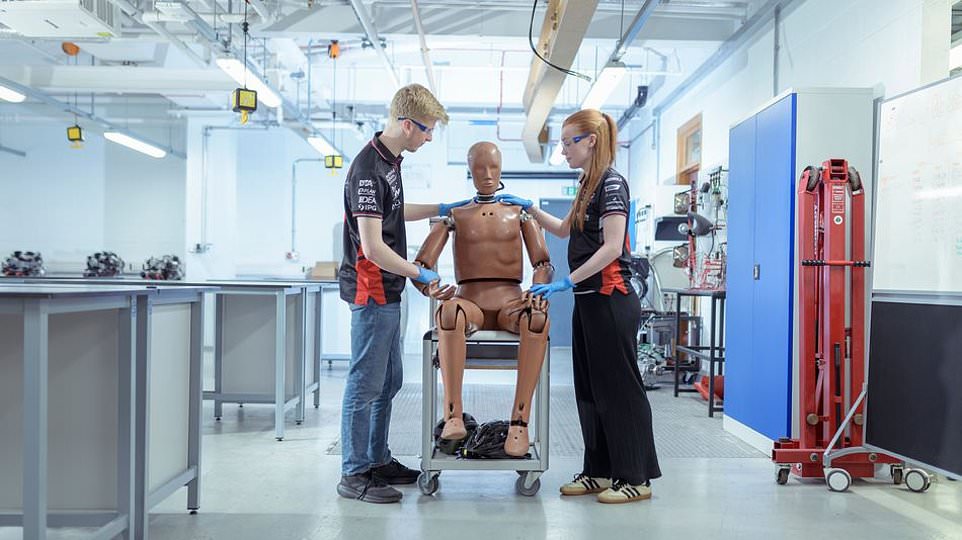
Overview
Sheffield Hallam University (SHU) is joining the higher-education stampede to London in 2026 as the latest university to open a campus there. It’s a significant development for a university faced with a long-term decline in applications (down 30% on a decade ago), offering accounting and finance, business, computing, law, psychology and public health courses at undergraduate and postgraduate levels. And at the heart of its city campus in central Sheffield, three new zero-carbon buildings will open for the 2025-26 academic year, providing a new home for the business school among other faculties. Business – alongside nursing and healthcare and teacher training – is one of the key subject offerings of this institution, which enjoys an excellent graduate employment record and a strong ranking in guides such as ours. A civic university agreement enshrines its commitment to contribute to the region’s economy and jobs, education and skills, health and wellbeing and community. It is one of the largest providers of earn-while-you-learn degree apprenticeships with more than 3,000 apprentices enrolled. The quality of teaching at SHU is recognised by an overall gold rating in the 2023 Teaching Excellence Framework and an outstanding rating from Ofsted for its teacher training across four age groups.
81 (joint). University of Buckingham

Overview
Buckingham registered two top-ten performances in the 2025 Whatuni Student Choice Awards – ranking fourth for teaching quality and seventh for student support – in contrast to another disappointing set of results in the 2025 National Student Survey, where the university came bottom for student experience under our analysis. These outcomes were both voted for by the university’s students, who are based on an attractive riverside campus in the pretty country town of Buckingham. Teaching is modelled on that found in nearby Oxford, with small classes and an intensity of work generated by Buckingham’s compression of most degrees into two-year programmes. Copied now by some in the state sector, two-year degrees were pioneered here. The price of tuition is essentially the same as in the state sector, but students’ bank balances benefit from the one-year reduction in living costs. A small university of about 3,000 students, Buckingham offers a compact portfolio of undergraduate courses with a strong presence in business, computing, law and teacher training. The university spent too long in the headlines for the wrong reasons in the past year with its vice-chancellor, Professor James Tooley, suspended and then ultimately reinstated in a saga that played out over several months.
83. University of Sunderland
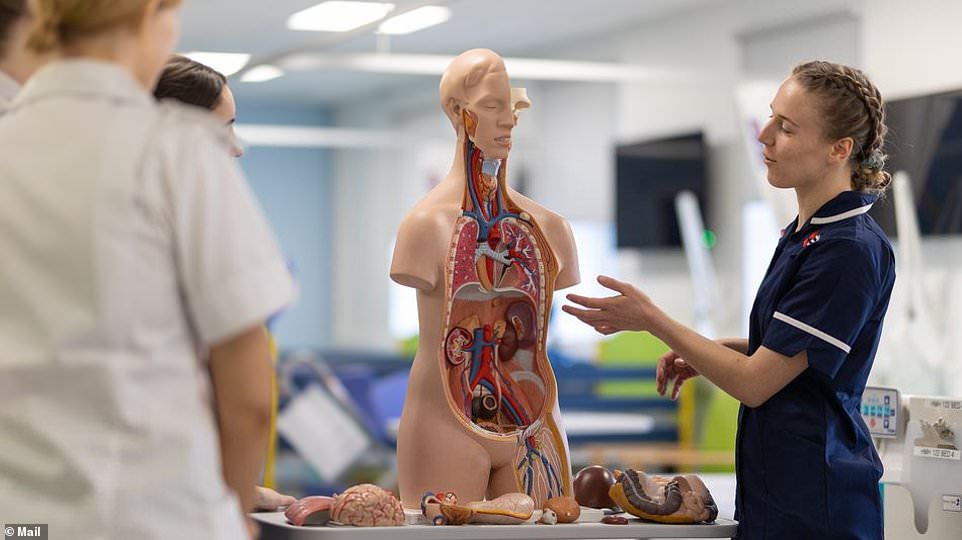
Overview
Applications are at their highest levels in the past decade as Sunderland consolidates its national presence with the official opening of its London Docklands campus this year. The £11.4m investment in the Canary Wharf area has dramatically altered the university’s previously predominant Wearside student profile; Sunderland now recruits a third of its students from London and the South East. What hasn’t changed is the university’s commitment to social inclusion. Just under 60% of students are the first in their families to go to university, half are mature and about a third come from ethnic minorities. Its medical school is working hard to diversify the traditionally middle-class profession of medicine, too. The university’s support for these students – and all others – earned it our University of the Year for Student Support title in the last edition of this guide. Support encompasses many areas here, with financial, academic, pastoral, mental health and careers to the fore. Degrees are vocationally focused and there are more than 800 degree apprentices on programmes as diverse as senior journalist, district nurse, electronic and electrical engineer and social worker. A new teacher apprentice pathway is in the offing.
84. University of the West of Scotland

Overview
One in three students beginning their courses at the University of the West of Scotland (UWS) last September – 1,145 in total – came from homes in the most deprived 20% of Scottish postcodes. This is the biggest proportion at any Scottish university for the ninth consecutive year – a product of a recruitment policy that places value ‘not only on qualifications, but on life and work experience’. The latest Times Higher Education impact rankings placed UWS second in Scotland (behind the University of Glasgow) and joint 26th in the world for reducing inequalities. All but 20 of last year’s UK intake came from Scotland and the vast majority of them come from the immediate region surrounding the university’s four campuses in Paisley, Ayr, Hamilton (home to the Lanarkshire campus) and Dumfries. There is even a campus in London’s Docklands offering international business, collaborative health and social care, and professional health studies undergraduate degrees. The university’s portfolio of largely vocational degrees has been expanded in recent times to include several graduate apprenticeships spanning everything from business management to early learning and childcare. Healthcare students make up about a third of undergraduates, with those studying computing, social sciences and teacher training also a significant presence.
85. St Mary’s University, Twickenham
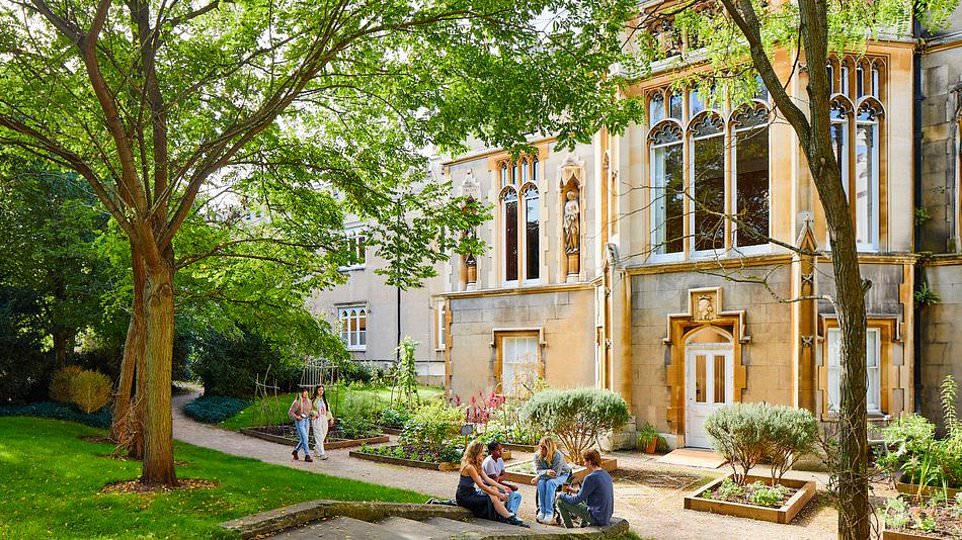
Overview
St Mary’s celebrates its 175th anniversary this year with the opening of a new medical school and a significant upgrade of on-campus academic and social facilities. The first medics will be recruited in the new admissions cycle to begin their studies in September 2026. Initially only open to international applicants, the medical school adds some heft to this small university located on an attractive campus in south-west London. With fewer than 4,000 undergraduates, St Mary’s offers a very different university experience to that found elsewhere in the capital – more personal and with the ethos of its Catholic foundation very much to the fore, although the university is open to students of all faiths and none. It’s popular with its students, scoring consistently well in the annual National Student Survey (NSS) across all three ranking measures. St Mary’s has an outstanding reputation for its ten sports degrees – its biggest study area – and has attracted (and continues to attract) top-flight athletes, none greater than Sir Mo Farah. Courses include sport and exercise science, sports coaching science, sports management, sports psychology, strength and conditioning science, and sport rehabilitation. Teacher training, for which the institution was originally founded in 1850, remains a core activity.
86. University of South Wales

Overview
The University of South Wales (USW) has embraced degree apprenticeships, with 1,150 degree apprentices on campus working across 18 programmes. These span mechanical, railway, civil, electrical and electronic engineering, semiconductor technologies, building and quantity surveying, real estate, policing, digital and technology solutions, and construction project management. The profile of degree apprenticeships reflects the USW’s hands-on and practical approach to higher education. Further evidence is provided by a new chiropractic teaching and learning space being created on the Treforest campus which, as well as meeting the needs of students on the course, offers out-patient clinic facilities for the local community. USW ranks fifth in the UK and top in Wales for the number of student start-up businesses – 136 – established in 2023-24, demonstrating the entrepreneurial spirit fostered in its 23,000-strong student body. Those students are spread across five sites in three locations – Cardiff, Newport and Pontypridd. The Welsh capital is home to the university’s creative industries courses, while Newport provides education and teacher training, business, computing, social work and psychology degrees. Everything else is taught in Pontypridd, where the university is headquartered and which is home to three of USW’s sites.
87 (joint). Birmingham Newman University
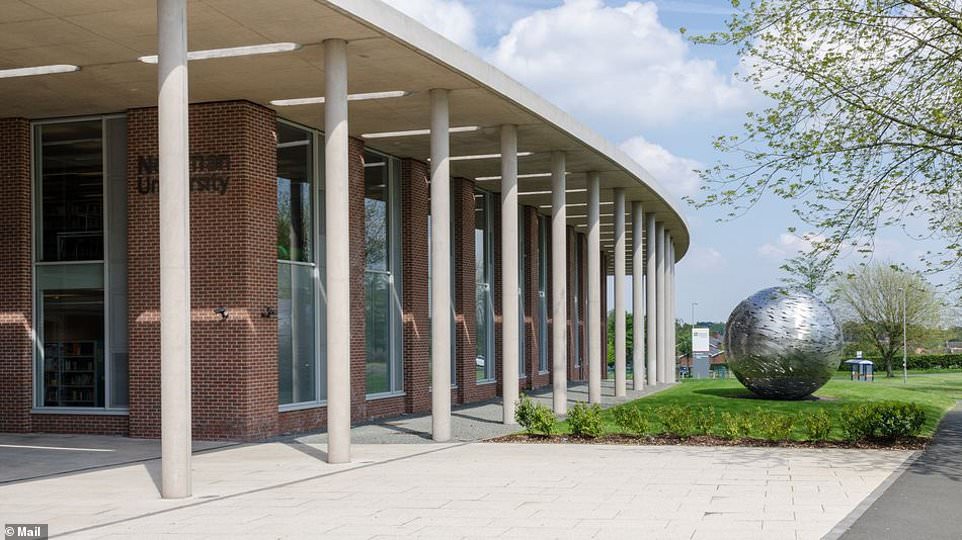
Overview
Newman is by far the smallest of Birmingham’s universities, set on the outskirts of the city, but the tight portfolio of around 40 undergraduate degrees continues to grow in popularity among applicants seeking a more personal university experience. Formerly a Roman Catholic teacher training college, the university has diversified considerably – particularly into healthcare – and saw more than 5,500 applications for admission in September 2024, a 46% increase on the year before. Admissions were also up, hitting a record level but still numbering well under 1,000 students. A name change in September 2023 to bring Newman’s home city into its official title was designed to make its location clear to potential applicants from beyond the West Midlands. However, while applications have surged, the dial hasn’t shifted in terms of where they come from, with around 82% of last year’s new recruits still hailing from the immediate area. They are attracted by what the university describes as ‘a traditional ethos. A modern approach. A sense of belonging’. More than two-thirds of entrants are the first in their immediate family to go to university – one of the highest proportions at any university – and around half the intake are from ethnic minority groups.
87 (joint). University of Brighton
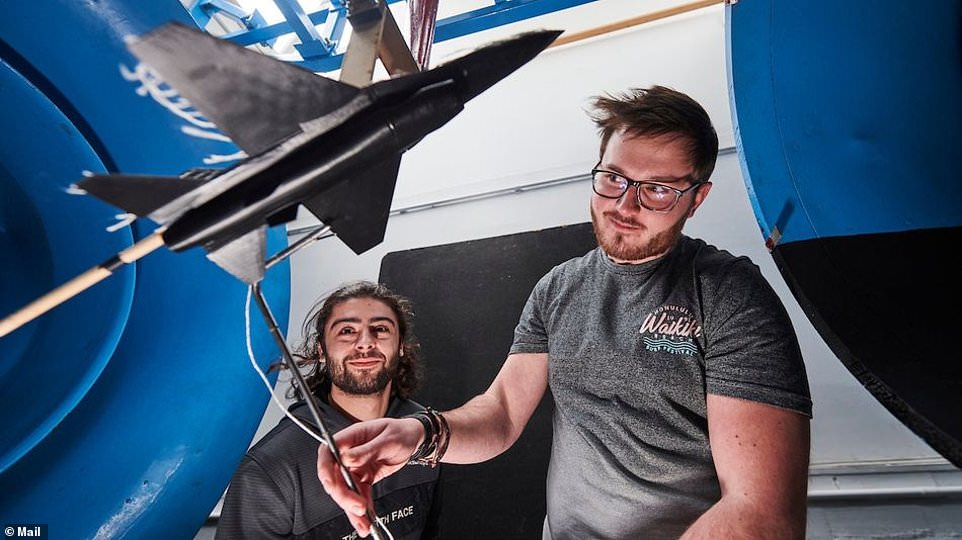
Overview
The past academic year represented the start of a ‘new era’ for the University of Brighton. The trigger for Brighton’s claim is the concentration of the university’s teaching and research on the hip coastal city following the closure of its campus in (the slightly more geriatric) Eastbourne, 20 miles along the coast. The transfer of Eastbourne’s portfolio of sport and health degrees to Falmer – one of three campuses in Brighton itself – followed a makeover of the campus, which borders the South Downs National Park, to accommodate the influx of students. Falmer is also now home to the new Brighton Sport & Health Complex, containing the UK’s largest indoor cricket academy. The university has two further sites in Brighton – City and Moulsecoomb – and a student population of around 17,000, two-thirds of whom come from London and the South East. Brighton has a strong academic reputation. It was a Sunday Times University of the Year as long ago as 1999, and it was the first modern university to be awarded a medical school, run in collaboration with the University of Sussex. The presence of two universities in the city only adds to the lively nightlife.
89 (joint). University of Chester

Overview
Chester rolls out its Future Skills Curriculum in time for the new academic year, promising students that it will deliver a mix of ‘experience, knowledge and confidence’. At its core will be skills that employers have told the university they need. No more than two modules will be taught simultaneously and traditional examinations are being replaced by ‘authentic assessment’ – continuous assessment integrated into courses, designed to replicate how students will be required to recall knowledge in a working environment. Chester is the latest institution to ditch the more traditional university experience as it fights to keep enrolments buoyant – both applications and admissions are down by about a third from the peak around ten years ago – and to make it a go-to destination for those seeking a graduate-level job. The university is based largely in the attractive city of Chester, with outposts in Birkenhead and Warrington and its land-based centre Reaseheath, near Nantwich. It admitted its first medical students in 2024 for a four-year graduate-entry degree, adding to its already significant presence in health-related courses. Teacher training is also big, reflecting Chester’s origins as the UK’s first teacher training college at its founding in 1839.
89 (joint). University of Chichester

Overview
Our University of the Year for Teaching Excellence, Chichester offers its 5,000 undergraduates a more personal university experience. Students consistently rank the university highly in the annual National Student Survey (NSS). Chichester earned a string of exceptional scores in excess of 90% for the quality of teaching in this year’s NSS, while also making the UK top 20 for student support in our analysis of the outcomes. Founded as a teacher training college in 1839, nowadays design, creative and performing arts students make up the biggest study area, although primary and secondary school teacher training – notably for PE teachers – is still key. It is not just students who rate the teaching highly. Ofsted inspectors recently gave outstanding ratings in all areas for primary and secondary teacher training. And the university earned an overall gold rating in the 2023 Teaching Excellence Framework outcomes. Chichester has a strong portfolio of arts, performing arts, healthcare and sport-related degrees, ranking particularly high for psychology and sport science in our subject tables. The university is based on two campuses – Bishop Otter in Chichester and nearby Bognor Regis – where admissions fell by nearly 20% in September 2024. About 70% of the UK intake comes from the South East and the university achieves good social diversity on campus, with just under half the students being the first in their immediate family to attend university.
89 (joint). University of Derby

Overview
Derby makes a strong teaching offer to its students. An overall gold award in the latest Teaching Excellence Framework is complemented by heavy investment in new facilities and the development of cutting-edge courses. Careers support is integrated into the curriculum, which includes working on real-world projects to enhance employability and equip students for the working world. Partnerships with local employers which are also international giants – Rolls-Royce, Toyota and Alstom among them – provide opportunities for work experience as well as placements, internships and, ultimately, graduate jobs. Most recently, the university has developed a new two-year degree in international business and artificial intelligence in partnership with Rolls-Royce to meet an immediate industry need. Derby is one of the largest providers of degree apprenticeships in the country, with around 2,000 apprentice learners enrolled here. A mid-sized university of around 20,000 students, Derby recruits more than three-quarters of its students from the East and West Midlands. The intake is socially diverse, too; Derby was named University of the Year in the 2020 Social Mobility Awards. The university is based on four sites in Derby and headquartered at Kedleston Road, with a healthcare outpost in Chesterfield.
89 (joint). University of the Arts London

Overview
The University of the Arts London (UAL), our Arts University of the Year, is made up of six world-class colleges scattered across the capital: Central Saint Martins, London College of Fashion, London College of Communication and the Colleges of Arts in Camberwell, Chelsea and Wimbledon. It is one of the few British universities not facing a cash crisis, thanks to its reputation. Tuition fees from international students made up 55% of UAL’s total income last year and overseas students account for around 40% of its undergraduates. Its graduates are hugely in demand, with end-of-year shows a magnet for the creative industries looking for the ‘next big thing’. The six colleges span all of those industries – from fashion to media, from acting to sculpting, from fine art to jewellery design and from games art to prosthetics. They came together to form UAL in 2004. Recent investment has transformed the university’s estate with the introduction of new premises for the London College of Fashion in Stratford’s Queen Elizabeth Olympic Park. Applications are, unsurprisingly, running at record levels. Only the best get a place, but the list of famous alumni – who make up more than half of the Turner Prize winners – suggests that talent will out. UAL had the most student-run start-ups of any university last year, showing students here have the business brains to go with the creativity.
93 (joint). Canterbury Christ Church University
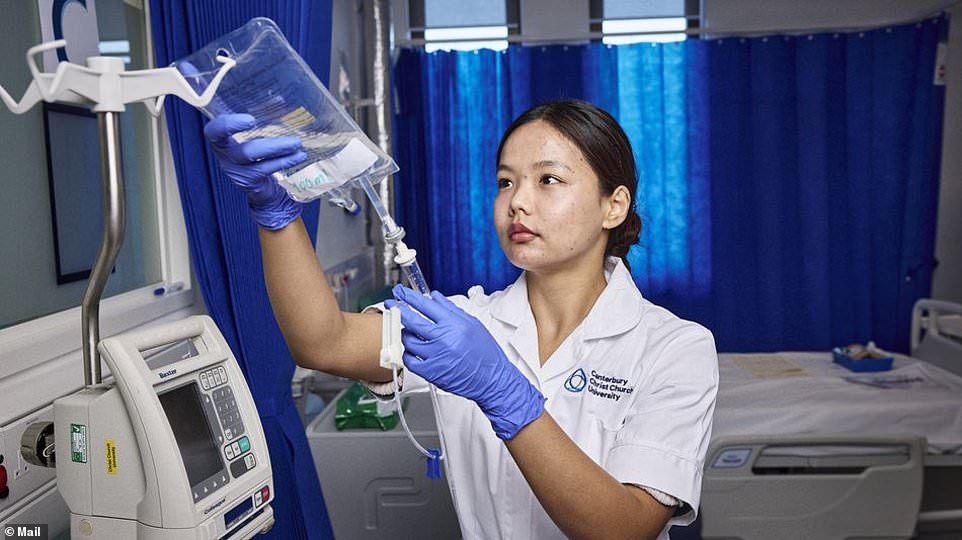
Overview
As its first medical graduates left the Kent and Medway Medical School (KMMS) this summer, Canterbury Christ Church University (CCCU) could reflect on how far it has come from its foundation as a teacher training college in 1962. The modern CCCU has the £65m Verena Holmes Building engineering hub at its heart, and a diverse portfolio of courses including business and management, nursing and healthcare, law, media, sport science and music and performing arts. The university does well in our graduate employment measures – a reflection of the vocational nature of many courses, which feed large numbers of graduates into both the public and private sector. However, the university attracted a swathe of negative publicity in the past year with its £20m cost-cutting programme and the axing of its English literature degree. The irony of this happening in the city that gave us Chaucer and The Canterbury Tales was not lost on many. CCCU has an excellent record for widening participation in higher education – aided by an extensive and expanding range of foundation years for less well-qualified students – with one of the largest proportions of first-generation students. It recruits heavily from the immediate surrounding area which includes some of the most deprived parts of southern England.
93 (joint). University of Cumbria
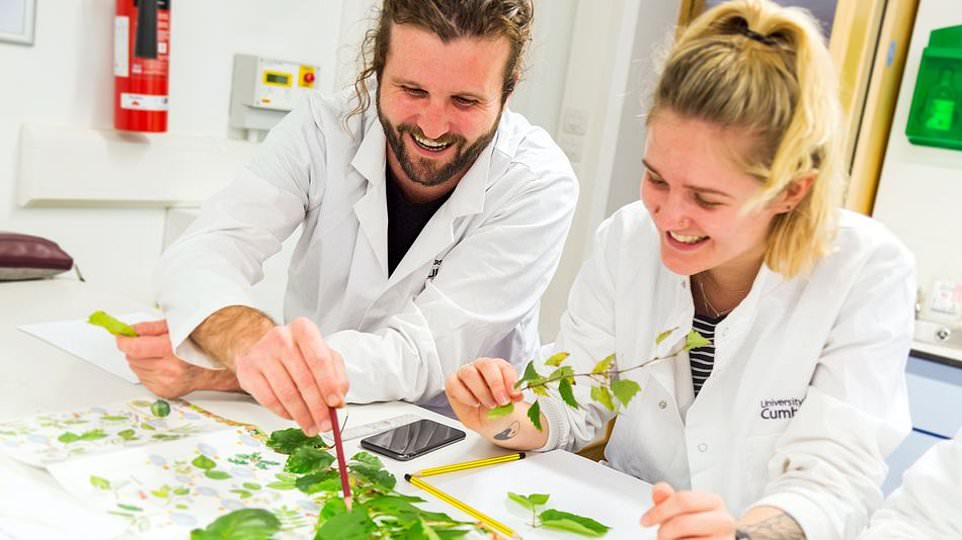
Overview
This small university of around 10,000 students has a true regional footprint in a sprawling county otherwise short of higher-education options, and is playing a key role in the regeneration of both Carlisle and Barrow-in-Furness. Both will benefit from the opening of new campuses in the coming weeks and months, which should help turn around application and acceptance figures – both at their lowest in the past decade in the admissions cycle for September 2024. A graduate-entry medical school – The Pears Cumbria School of Medicine – admits its first students in September 2025. Developed in partnership with the world-class medical school of Imperial College London, and with substantial financial backing from the Pears Foundation, it is based in Carlisle. There are two existing sites in Carlisle (with the Citadels campus under development) and a new campus in Barrow is due to open in September 2025. Further outposts are sited in Lancaster and Ambleside at the heart of the Lake District. The latter offers several courses that reflect its location, including new degrees about to admit their first intake in ecology and wildlife conservation, and tourism and visitor economy management. There is even a campus in London which runs business, education and health programmes.
95. Kingston University
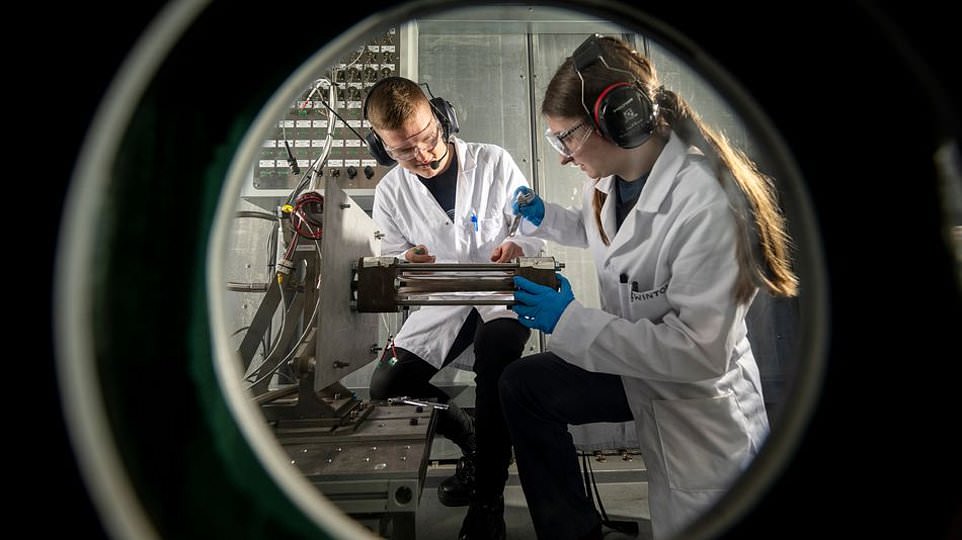
Overview
Kingston University’s pitch to applicants is that its degrees will equip them with the skills that employers say they need. Kingston’s Future Skills initiative means students on all degrees will develop and be assessed on nine core skills identified as being valued most by employers. These include creative problem-solving and digital competencies. A record number of students will benefit from acquiring these skills, with nearly 6,000 admitted to the university in September 2024. More than two-thirds of the domestic intake are drawn from the capital – with a largely balanced intake of black, white and Asian students – and there is a sizeable international cohort. Sited in south-west London, students can experience the social and cultural playground of London without all of the cost. The university was one of just 26 nationally to achieve a coveted triple gold in the most recent Teaching Excellence Framework, covering an overall rating, student experience and graduate outcomes. A significant upgrade of the Penrhyn campus is due for completion this year, and £55m was invested recently in improving student residential accommodation. However, the university has not been immune to the higher-education cuts and made several course closures to help save £20m.
96 (joint). Bournemouth University

Overview
Bournemouth has forged a strong reputation in film, television and the media that is reflected in its graduate employment ratings, which are among the strongest in the modern university sector. Only some lacklustre scores in the annual National Student Survey (NSS) – where the university now ranks outside the top 100 on all three of our NSS-derived performance measures covering teaching excellence, student support and student experience – hold the university back from a much higher ranking in our table. The coastal location makes this a popular student choice, with just under 4,000 undergraduates admitted last year, three-quarters of them from the South East and South West. There are two main campuses: Talbot, which is home to the faculty of media and communication, the faculty of science and technology and the business school; and Lansdowne, which houses the faculty of health and social sciences. All undergraduate degrees offer the opportunity to undertake a work placement, and many students meet their future employer this way. Bournemouth’s earn-while-you-learn degree apprenticeship portfolio has also been expanded following Ofsted’s outstanding rating in 2024 for all aspects of provision. New pathways have been added for the likes of social workers, biomedical scientists, accounting finance managers and digital marketers.
96 (joint). University of Worcester

Overview
The development of the University of Worcester as a centre of teaching excellence for health subjects is progressing apace. The opening of the Duke’s Building on its Severn Campus earlier this year adds another flagship space for the teaching of medical and health subjects. Home to the Three Counties Medical School – one of just 12 established in modern universities – the campus has both transformed a previously derelict industrial estate and the university itself. Worcester is now one of the largest educators of health professionals in the West Midlands. It will be hoped that prestige developments like this will draw more students to this mid-sized institution, as both applications and admissions via Ucas were at a ten-year low in September 2024. The university has four sites in the pretty cathedral city of Worcester, and three-quarters of students hail from the local region. It has an excellent reputation for fostering social mobility, with more than half of its students coming from homes where neither parent went to university, and around one-third are mature students. Sport provision is outstanding – partly thanks to the 2,000-seat Worcester Arena, which is one of the UK’s leading venues for wheelchair basketball.
98 (joint). Brunel, University of London
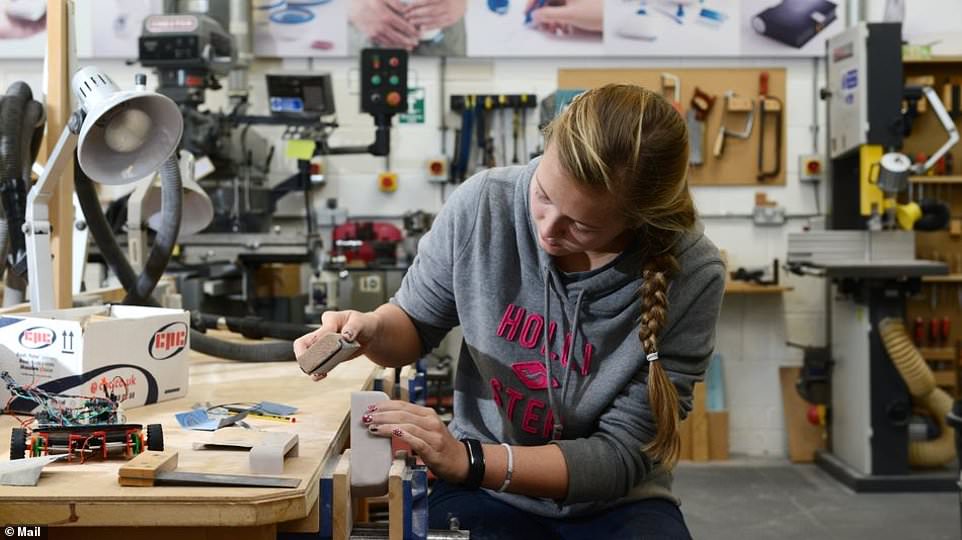
Overview
Brunel has joined the University of London in the past year. Beyond moving the university from B to L in our guide, the development has much more significant ramifications for this mid-sized institution in the suburbs of North-West London. The University of London (UL) is a federation of 17 institutions, many of which feature in this guide, and more than 250,000 students. Brunel students will benefit from access to the Senate House Library (UL’s main lending library), inter-collegiate accommodation services and opportunities for teaching and research collaboration with other federation members. Applications and admissions in September 2024 continued their downward drift, with both at their lowest in a decade. However, Brunel remains popular with both international students and Londoners, the latter making up three-quarters of the domestic intake. It is also one of the most ethnically diverse campuses; Asian and black students made up almost two-thirds of admissions in September 2024. A pioneer of sandwich courses – which offer a year working in business or industry – as part of a four-year degree, Brunel focuses on technical, professional and applied disciplines, with life sciences, business and computer science among the most popular courses.
98 (joint). Cardiff Metropolitan University

Overview
Cardiff Met scores well for student support, and the quality of its courses are rated highly by a fast-growing student body. Applications to Wales’s sportiest university – and one of the leading sports universities in the UK – have grown by more than 60% since 2019, with last year’s intake the largest yet. While the city is one of the most fashionable student destinations, Cardiff Met’s particular offer to students plays a big part in its success. It was named our Welsh University of the Year for 2024 and recruits more than half of its students from Wales. It works hard to keep costs down and the standard of facilities high. It also prioritises student safety on campus and has robust mental health and wellbeing structures in place, including a team of NHS mental health nurses working on campus. Cardiff Met regularly ranks in the top 30 for sport in the UK despite its relatively small size, and its outstanding facilities include the National Indoor Athletics Centre. The university offers a breadth of courses spanning teacher training, health, sport, social and life sciences, technology, business and creative subjects. In addition to the teaching campuses, Cyncoed and Llandaff, there is a third residential campus, Plas Gwyn.
100 (joint). Birmingham City University

Overview
Birmingham City University (BCU) has a footprint almost as large as the city from which it recruits the majority of its students. There are several campuses. The City Centre campus is home to cutting-edge arts buildings, such as the £57m Royal Birmingham Conservatoire, and uber-modern science infrastructure such as the £70m STEAMhouse, which provides learning space for computing and digital technology students and an incubator where businesses can collaborate with students. Edgbaston’s City South campus, meanwhile, is home to the health professions, nursing and midwifery, life sciences and social work courses. The School of Jewellery – Europe’s largest – sits at the heart of the city’s world-renowned Jewellery Quarter, and the Alexander Stadium that hosted the 2022 Commonwealth Games is now BCU’s specialist space for sport and exercise science courses. Thanks to the university’s strongly vocational course portfolio and well-regarded work placements, BCU graduates do well in the graduate employment market – 70% land a high-skilled job within 15 months of graduating. The university is also a key provider of degree apprenticeships, with 19 existing pathways and further programmes in the offing for civil engineers, construction quantity surveyors, architectural assistants, laboratory scientists and cybersecurity technical professionals.
100 (joint). Leeds Beckett University
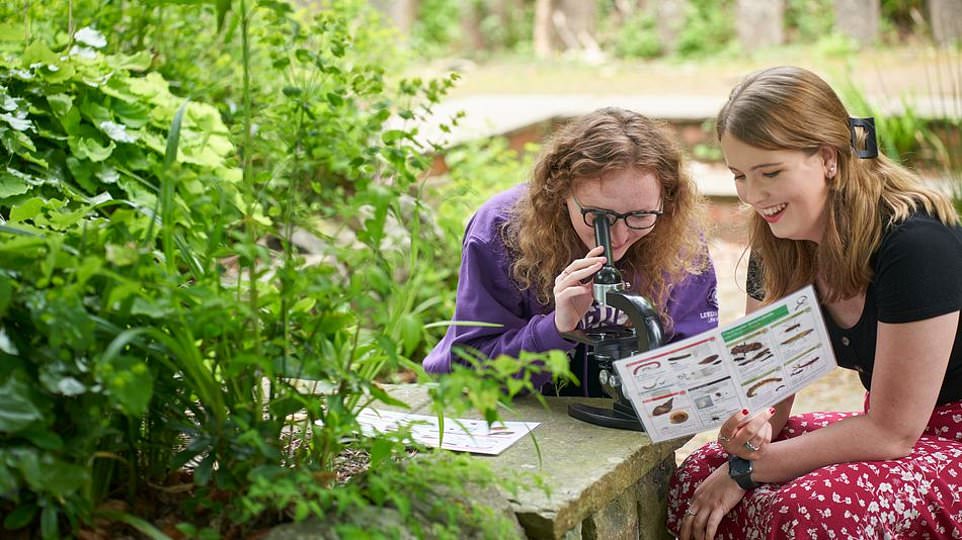
Overview
Leeds Beckett is one of the modern universities created in the past 35 years. With an excellent track record in areas as diverse as teacher training, sport, media and health, the university has been moving slowly back up domestic rankings after a period in the doldrums. Applications have settled around pre-2022 levels after surging beyond 30,000, with the university recruiting more than half of its domestic intake from within Yorkshire and Humberside. There is a focus on embedding skills valued by employers within degree programmes, and recent upgrades of computing, sport, education and healthcare facilities will produce graduates familiar with workplace-standard technology and skills. Leeds Beckett’s careers team delivers in-curriculum and extra-curricular activities across all subjects. It provides guidance and opportunities for professional development for students both during university and for up to five years after graduation. This approach has helped produce consistently good scores for student support in the annual National Student Survey. Leeds Beckett is in the vanguard of the earn-while-you-learn movement in higher education, with around 1,000 degree apprentices on campus following 16 programmes. The university has two campuses, City and Headingley, and the latter is home to the likes of teacher training and sport courses.
102. Middlesex University

Overview
Undergraduate admissions via Ucas at Middlesex University in September 2024 were down for the seventh time in the past eight years, a 55% cumulative fall since 2016. This is scant reward for a university that has worked hard to update its courses and facilities to reflect best practice. Employability, digital literacy and wellbeing have been embedded into all degrees. Students are encouraged to undertake work placements at home and abroad or study overseas at the university’s sister campuses in Dubai and Mauritius, or those of one of its student exchange partners. Middlesex has about 1,200 degree apprentices on campus – one of the larger contingents at any institution – with four new pathways awaiting validation, including data scientist and cyber-security technical professional, to join the 13 existing ones. In common with other institutions with a diverse student intake, Middlesex has reorganised teaching timetables to group blocks of study together to help students combine degrees with work, family or other responsibilities. The university is based on a campus in Hendon, North London, and provides many vocational courses devised in partnership with business and industry. Nursing, midwifery and healthcare students, who make up about a quarter of the intake, have access to some of the latest simulation equipment.
103 (joint). Goldsmiths, University of London

Overview
Goldsmiths is emerging from the financial turmoil of the past two years a leaner, fitter – and still distinctive – institution. ‘Different is what we do,’ the university proclaims in its prospectus. Many feared that difference and edginess was under attack as the university was forced to make hefty savings by a decline in income and student numbers. Those student numbers remain at their lowest point in the past decade with just 1,635 students admitted via Ucas to courses beginning in September 2024, down from 2,780 as recently as 2017. Applications are at a low ebb, too, but at least the university’s Transformation Programme has moved the university on to a sustainable footing. Based on an attractive campus in a happening part of London (New Cross Gate), Goldsmiths has a reputation for turning out some of the country’s brightest young creatives. Nine alumni have won the Turner Prize, Britain’s premier arts award, since its inception in 1984; Mohammed Sami is the latest to be shortlisted for it. Might Goldsmiths have a 10th winner come December? The 58 degrees offered here don’t just span the creative and performing arts. You can study computing, artificial intelligence, politics, economics and marketing, too. A quarter of last year’s undergraduate intake came from overseas and a heavy majority of the domestic recruits come from the capital itself. It makes for a socially and ethnically diverse student population – another embodiment of different being what Goldsmiths does.
103 (joint). University of East London
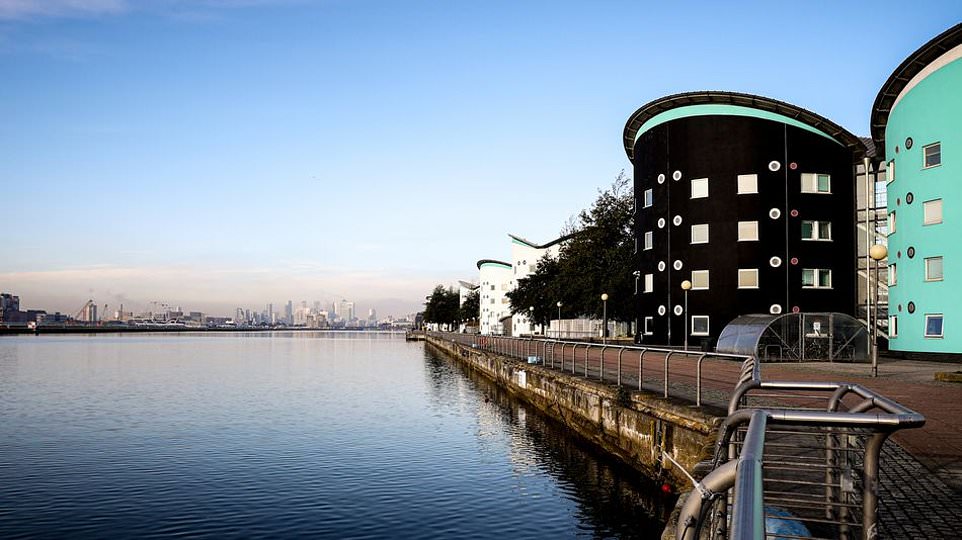
Overview
The University of East London (UEL) has partnered with more than 2,500 employers to help students learn employability skills while studying one of its job-focused degrees. While graduate salaries are high, the numbers in high-skilled employment are disappointing, but UEL works hard to set its diverse student population on the road to career success. It runs a funded internship scheme targeting students from under-represented backgrounds, and its professional mentoring programme pairs students with industry experts so they can gain career insights. Pastoral and academic support structures are exemplary and reflected in the outstanding scores awarded to the university by its students in the annual National Student Survey (NSS). Recent NSS outcomes have done much to help lift UEL away from the foot of rankings such as ours and better reflect its excellent provision for students. The university is headquartered on an architecturally striking waterside campus in the historic Royal Docks district. There are further sites at University Square Stratford – home to UEL’s Centre for Performing Arts Development and many of the courses that place so highly in our subject rankings – and a new health campus is taking shape on an older site in Stratford.
103 (joint). University of Gloucestershire
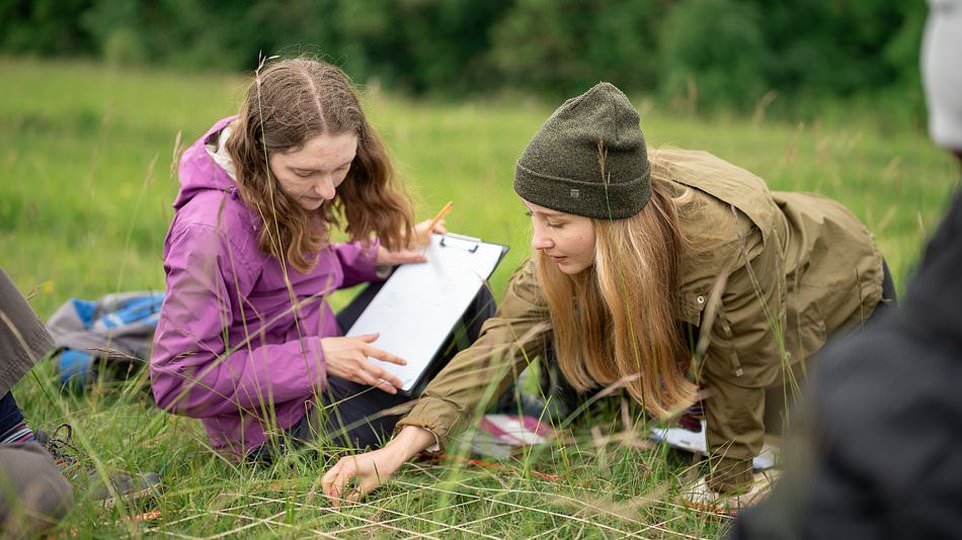
Overview
The increase in degree apprentices is helping to balance a fall in degree admissions at the University of Gloucestershire. The number of entrants applying through Ucas is down one third on the level in 2016 and hit a ten-year low in September 2024. The university will hope that the opening of the new City campus in the heart of Gloucester this September – with plenty of university/community shared spaces – will help turn admission figures around. The university is split between Gloucester and its neighbour Cheltenham, attracting two-thirds of its domestic intake from the South-West and West Midlands. It markets itself as the Connected University, and Gloucestershire’s close relationship with employers sees the portfolio of courses under constant review to keep it relevant to their shifting needs. There are 17 apprenticeship pathways available, and the university hopes to grow the number of earn-while-you-learn students to around 1,100 by September 2026. Creative and performing arts subjects occupy the biggest proportion of students, but there is a strong showing for healthcare, teacher training and sports, too. The latter is one of the university’s specialisms and features in 13 degree options, such as physiotherapy, journalism and sport business management.
106 (joint). Bishop Grosseteste University
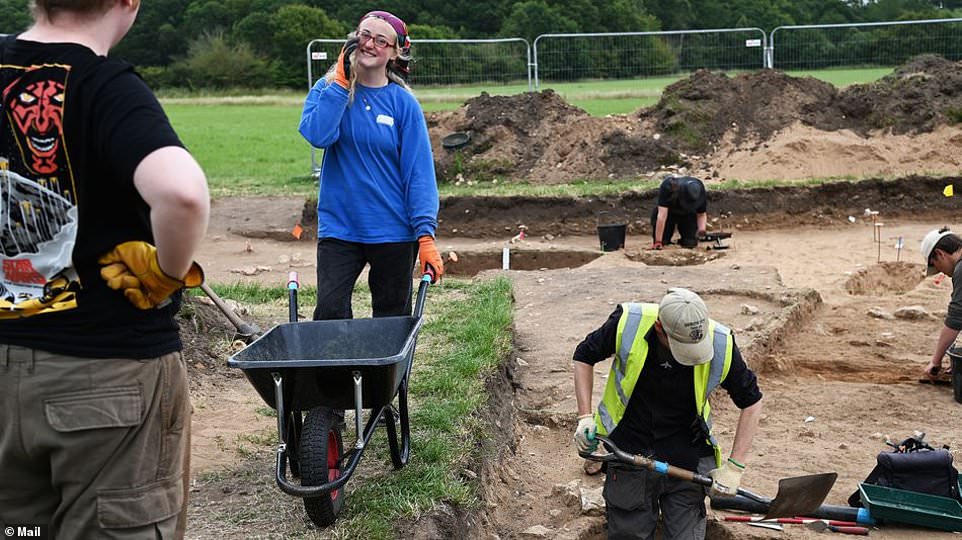
Overview
Bishop Grosseteste (BGU) is our University of the Year for Student Support 2026. The award is made following its outstanding success in this year’s National Student Survey (NSS), where it topped all three of the NSS-derived performance indicators used in our ranking, covering teaching excellence, student support and student experience. It is student support where BGU truly stands out, offering an environment so far removed from the impersonal, big-city student experience. With only 43 undergraduate degrees and a student population of just over 2,000, BGU can get to know all its students by name. The university is set among the cobbled streets and cathedral splendour of Lincoln and attracts two-thirds of its students from the immediate region, where it is a well-known and respected institution. Travel beyond the East Midlands, however, and it is less known – hence the name change to Lincoln Bishop University from September, incorporating its location in the title. Bishop G, as it is affectionately known (at least for now), started life in 1862 as a small Anglican teacher training college for women. Teacher training remains popular, but options in business, criminology, military history and psychology speak to the diversity within its course portfolio.
106 (joint). University of Bedfordshire

Overview
There has been heavy investment in facilities at Bedfordshire even as applications continue to fall. The intake via Ucas of just 1,610 students in September 2024 was 47% lower than just three years before. The announcement in March this year that a restructuring of the university was necessary therefore came as no surprise. The university blamed frozen tuition fees, rising costs and declining numbers of international students for the net loss of 80 jobs. All of which is sad for a university that has championed widening access to higher education from its inception. Only 12 universities admit a bigger proportion of their students from homes where the parents have not been to university, and Bedfordshire – headquartered in Luton, a town with high levels of deprivation – offers higher education to many who would otherwise miss out. All applications are reviewed on an individual basis. Students rate their mostly vocational courses highly, with consistently strong scores for teaching quality seen in the National Student Survey. New state-of-the-art simulation facilities for health and social care students in both Luton and Bedford, and cybersecurity students in Luton, will help to give graduates a head start in the jobs market, too.
108. Arts University Bournemouth
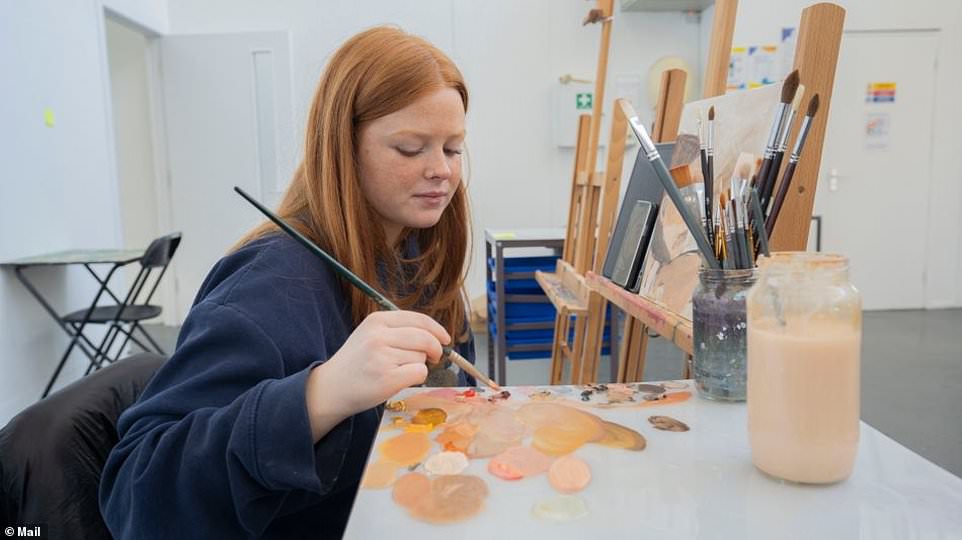
Overview
One of five specialist arts universities in this guide, Arts University Bournemouth (AUB) has some of the finest facilities available. Bournemouth Film School is the largest outside of London, and the CRAB drawing studio – designed by alumnus Professor Sir Peter Cook and opened in 2016 – was the first such space to be built in an art school in more than a century. A tight course portfolio covers most aspects of the arts, design and media. All courses, bar a BA in architecture, are offered with an optional one-year work placement. This gives AUB students a boost when it comes to kickstarting their careers in industries where jobs are notoriously scarce and unpaid ‘internships’ are prevalent. The university’s Innovation Studio has a six-month incubator programme for entrepreneurial graduate creatives ready to start their own businesses. A range of degrees with foundation years will be launched in September 2026 to open AUB courses up to an even wider audience, including those without the necessary qualifications for direct entry on to degree programmes. Bournemouth is something of a student playground. The beaches are an excellent distraction when exams are over and the town boasts an active student nightlife all year round.
109 (joint). Anglia Ruskin University
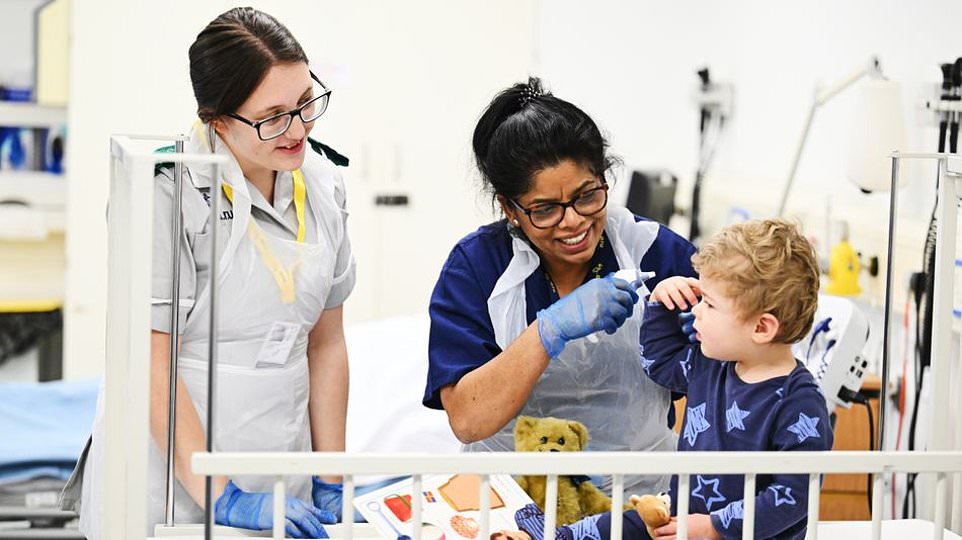
Overview
Anglia Ruskin University (ARU) is one of the largest providers of earn-while-you-learn degree apprenticeships in the country. In the past year, ARU celebrated the milestone of striking partnerships with 1,000 degree apprenticeship employers offering pathways to 29 professions. One in seven ARU students are now on apprenticeship programmes, with total enrolments heading towards 4,000. Ofsted rated provision as ‘good’ in February, praising the ‘relentless effort’ to drive up the quality of provision since a previous inspection in 2022 found apprenticeship programmes required improvement. All courses, both apprenticeships and degrees, have key work skills embedded into the curriculum. The university has a true regional presence in a part of the country remarkably underserved by higher education, recruiting two-thirds of its domestic intake from the immediate region. It has expanded recently from its longstanding bases in Cambridge and Chelmsford, establishing new sites in Peterborough and Writtle. The latter campus, on the outskirts of Chelmsford, specialises in agricultural, animal and environmental courses. Headquarters are on the main campus in Chelmsford, home to the Ashcroft International Business School (heavily endowed by Lord Ashcroft, one of the university’s principal benefactors) and there is a further campus in Cambridge, opened by patron John Ruskin in 1858.
109 (joint). De Montfort University

Overview
Leicester-based De Montfort University (DMU) is pushing its global credentials. DMU Global allows students to live, study and volunteer abroad, often at partner institutions but also at its own outposts in Dubai, Kazakhstan and Cambodia. More than 1,250 students took part in DMU Global opportunities in 2023-24, and the university offers bursaries of £200 or £400 (depending on the destination) to help fund these experiences. As well as broadening the minds of its students through travel, DMU prepares them for the world of work. For two years running, students have voted their work placements as the best in the UK in the Rate My Placement awards. DMU was one of the first universities to move over to block teaching, where students are taught one module at a time to improve their work-life balance. They are examined at the end of each seven-week block of teaching – so there is no end-of-year exam panic – and study two modules consecutively per term. A new digital technology learning hub has added virtual production, audio, TV and broadcast facilities equipped with the latest technology and a Cyber Defence Training Network to help develop student expertise in cyber defence and resilience using a custom version of an industrial network. However, applications and admissions for courses through Ucas beginning in September 2024 stood at the second-lowest and lowest levels in a decade respectively. In May it emerged 94 jobs were at risk, and the university is seeking to make savings of £22m.
109 (joint). Wrexham University

Overview
Wrexham saw a significant jump in both applications and admissions for courses starting in September 2024. The name change from Wrexham Glyndwr to plain Wrexham the previous year to more closely identify the university with the newest city in Wales appears to have paid off, with applications and admissions up by more than 25% year-on-year, and applications at double the level of 2020. The university, which has a considerable presence in healthcare subjects, takes great pride in its social inclusion – with it having one of the highest proportions of students who are the first in their immediate family to go to university – as well as the high levels of support given to those students. It scores consistently highly for student support in our analysis of the annual National Student Survey (NSS), and it has ‘ASK’ support services hubs located on all three campuses – Wrexham, Northop and St Asaph. All the campuses will benefit from the ongoing £80m campus development programme. Two-thirds of admissions come from Wales, but a significant number cross the border from North-West England.
112 (joint). University of Greater Manchester
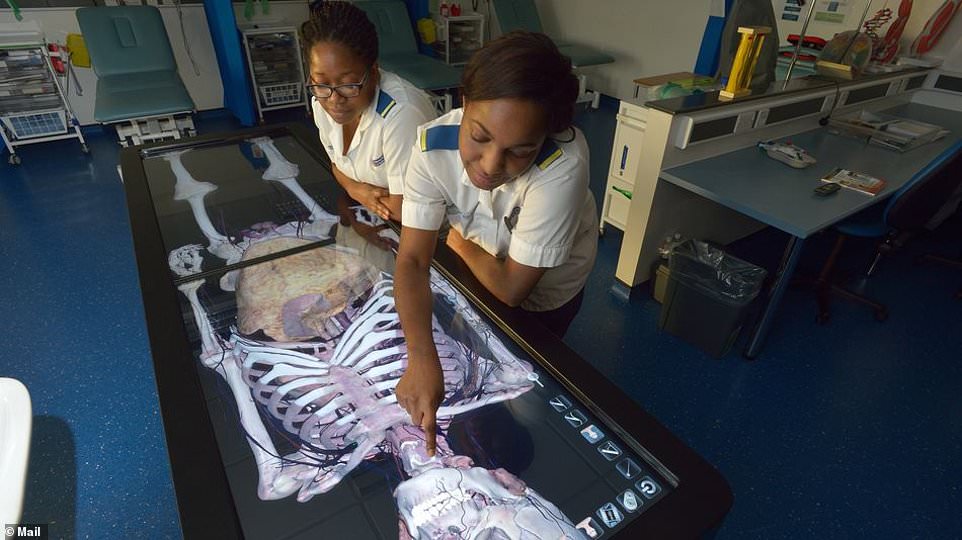
Overview
It has been a year of turmoil at the newly renamed University of Greater Manchester. The name change from the University of Bolton was not without controversy, having been opposed by both the local council and neighbouring universities. While the student intake from Greater Manchester needed no help identifying where the university was located, those from overseas might have struggled. However, that disagreement was dwarfed by the suspension of the vice chancellor, Professor George Holmes, and two members of staff in May following an internal report from the university’s Fraud Response Panel. Police are investigating. The Office for Students had already placed the university under enhanced monitoring in February after it was found to be in breach of its registration conditions regarding the quality of some business and management courses. In the meantime, Greater Manchester has joined the likes of De Montfort in delivering its degrees one module at a time, rather than students juggling modules simultaneously. For an institution that has such a diverse intake, with many students balancing family and work alongside studying (45% are aged 21 or over when they begin their courses), this might be the change that makes a university education more attainable and sustainable.
112 (joint). University of Northampton

Overview
Northampton boasts the only wholly new university campus to be built in the past 30 years. Waterside campus opened in 2018 and is home to 17,000 undergraduate and postgraduate students. All new undergraduates are offered a free laptop when they enrol or £500 as an accommodation discount or catering credit. This generous universal benefit is tailored to the university’s diverse student profile, which sees more than half of the intake coming from homes where parents did not attend university. A quarter of students are mature returners to education aged over 21 when they start their courses and around half are drawn from ethnic minorities. Northampton has a large number of students following healthcare courses and a significant presence in business and the social sciences. It is expanding its degree apprenticeship provision, with 11 programmes to be added. This is expected to take the number of apprentices on campus to 550 by September 2026. However, like other universities, Northampton is not immune from the financial problems troubling the sector. Faced with a forecasted deficit of £19m in 2024-25, the university has been reviewing its course portfolio (among other things) to help achieve savings of around £13m by 2029.
112 (joint). University of Westminster

Overview
The University of Westminster is a champion of social mobility with a diverse student body reflecting the capital’s wider population. More than one in five undergraduates admitted last September came from overseas in a year when applications were at their highest since 2015. A survey by the Institute for Fiscal Studies and education charity The Sutton Trust ranked Westminster second in England based on the proportion of former students who go from receiving free school meals to being among the top 20% of earners by the age of 30. Each student is assigned a personal tutor and has access to up to 20 sessions per academic year with the university’s mental health mentoring service. Employability is embedded across the curriculum, with work-based and placement learning now built into the first and second year of all degrees alongside optional year-long experiences. The university is based on four campuses – Cavendish, Regent and Marylebone in central London, and Harrow in North-West London. Westminster has embraced degree apprenticeships as an option for students keen to avoid the burden of student loan debt. By September 2026, the university expects to have 950 apprentices enrolled across seven programmes spanning construction, real estate and healthcare.
112 (joint). University of Winchester

Overview
A small university in a pretty cathedral city, Winchester was founded in 1840 as the Diocesan Training School for teachers – and this training remains a key offering today. Both primary and secondary teacher training programmes gained outstanding ratings from Ofsted in all areas last year. However, there is a rare balance of disciplines evident on campus, with almost equal numbers of trainee teachers, healthcare students and those following degrees in psychology, business, social sciences, creative arts and history. UK admissions grew by 6% in September 2024 after some lean years, which the university will hope represents a corner turned. About two-thirds of students come from the immediate South-East region, with just under half coming from homes where parents did not attend university. Winchester is split between two principal sites – the King Alfred Quarter, the university’s main campus; and the West Downs Quarter, which opened five years ago and is home to the faculty of business and digital technologies. The King Alfred campus, close to the city centre, contains an attractive mixture of old and new buildings and houses modern learning and teaching facilities, as well as the social hub, the library and the Queens Road and Burma Road student villages.
116. Norwich University of the Arts

Overview
Norwich University of the Arts is one of five specialist arts universities in this guide. It won our Arts University of the Year title last year for all-round excellence and its focus on graduate employability in creative fields. It takes a principled stand against unpaid internships and does not promote any opportunity to students or graduates that does not pay at least the minimum wage. The university’s Profile system, co-designed with employers, enables students to track and develop employability skills. These are focused on a tight portfolio of 27 undergraduate degrees covering the performing arts, visual arts, televisual arts, design and fashion. Norwich also offers programmes in creative computing, creative technology and robotics, and user experience design, marrying creativity to the digital age in areas with a shortage of graduates. Teaching of these courses received triple gold in the most recent Teaching Excellence Framework covering student experience, student outcomes and an overall rating – the only specialist arts institution to achieve this. Students are based in the heart of the attractive cathedral city of Norwich in a mix of modern and listed buildings, housing studios and workshops equipped with the latest technology.
117. Liverpool Hope University

Overview
Liverpool Hope, the smallest of the three Merseyside universities, straddles three campuses in and to the south of the city centre. Applications for admission in September 2024 stood at just below their 2022 peak and the number admitted was among the highest ever, as the university is enjoying a surge in popularity. With around 4,500 undergraduates, it can offer the personalised higher education so often lacking elsewhere where numbers of students are much higher and the resulting university experience considerably more impersonal. This is reflected in consistently excellent scores in all areas of the annual National Student Survey. There has been recent heavy campus investment, the shining result being the new i3 Building on the main Hope Park campus, which was officially opened in the 2024-25 academic year. It combines flexible teaching space with lecture theatres; multiple student workspaces, including areas for collaborative work; and classrooms equipped with the latest digital technology. Liverpool Hope is moving to a two-semester academic year as part of a redesign of its academic framework, aimed at promoting more interdisciplinary learning (among other things). The university has just launched four degree apprenticeship programmes, its first foray into this expanding market, which take their first students in September 2025.
118. Southampton Solent University
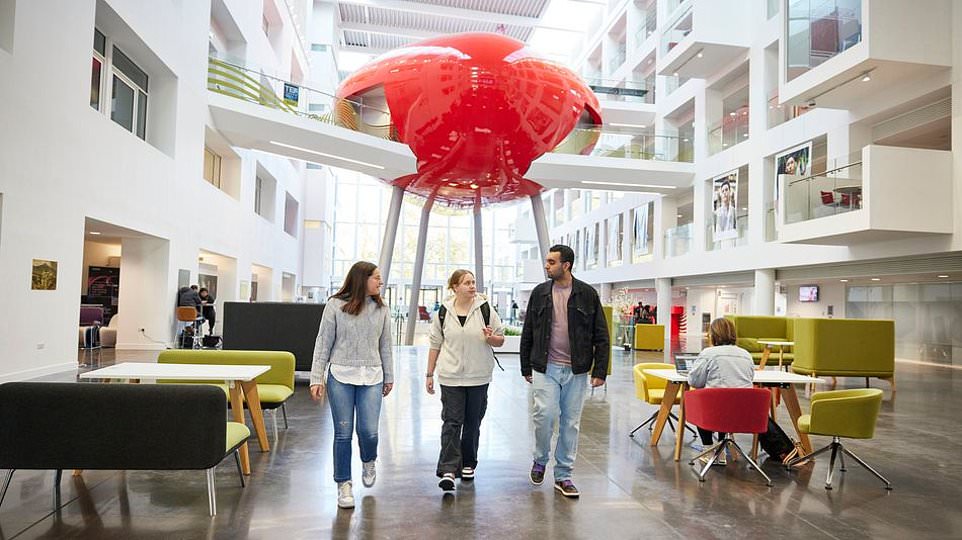
Overview
If you want a life on the ocean waves, to play a part in managing it, or to design the craft that sail on it, Southampton Solent is the place to come. The Warsash Maritime School offers more than 150 accredited deck, engineering, interior, maritime and offshore safety training courses. This is on top of more than 19 undergraduate and postgraduate degrees, foundation degrees and diploma courses. Facilities are second to none and include bridge simulators and a unique ship handling centre, which features an 11-ship scaled model fleet used for training masters and pilots. Applications across the university have been falling, however – down by a third since the pandemic – and admissions hit a new low in September 2024. A rebrand in the past year has restored Southampton to the front of the university’s name and better tied the institution in with the port city that makes its academic offer so distinctive. It secured a triple gold in the most recent Teaching Excellence Framework, covering an overall rating, student experience and student outcomes. New biomedical sciences and computer laboratories have opened in the past year, too. A compact portfolio of courses also covers everything from fashion and film to business and nursing.
119. University of Roehampton
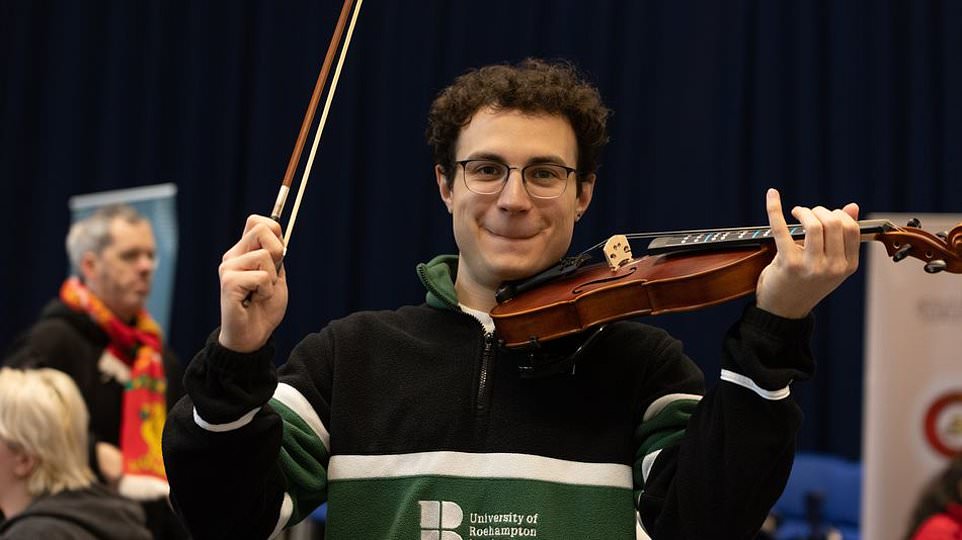
Overview
Roehampton has one of the most diverse intakes of any university. More than half of undergraduates come from homes where parents did not go to university, two-thirds are drawn from ethnic minorities, 40% received free school meals and more than 80% have at least one widening-participation characteristic. Keeping such a disparate group happy is a tough ask, but Roehampton has achieved this with aplomb, as demonstrated by its consistent success in the annual National Student Survey up until disappointing results this summer. Roehampton offers a more personal university experience than most other institutions based in the capital. It is organised into four colleges – Digby Stuart, Froebel, Southlands and Whitelands – arranged on a leafy campus in South-West London. Founded as teacher training colleges in the 19th century, teacher training is still a key academic area here, alongside healthcare subjects, social sciences, business and computing. Admissions via Ucas continue to fall (hitting a new low in the past decade in September 2024) but direct admissions of mainly overseas and mature students are on the rise. An underlying deficit in 2023-24 of £12m was caused in part by a £4m drop in tuition-fee income from UK students, while overseas tuition-fee income grew by £2m.
120. Bath Spa University
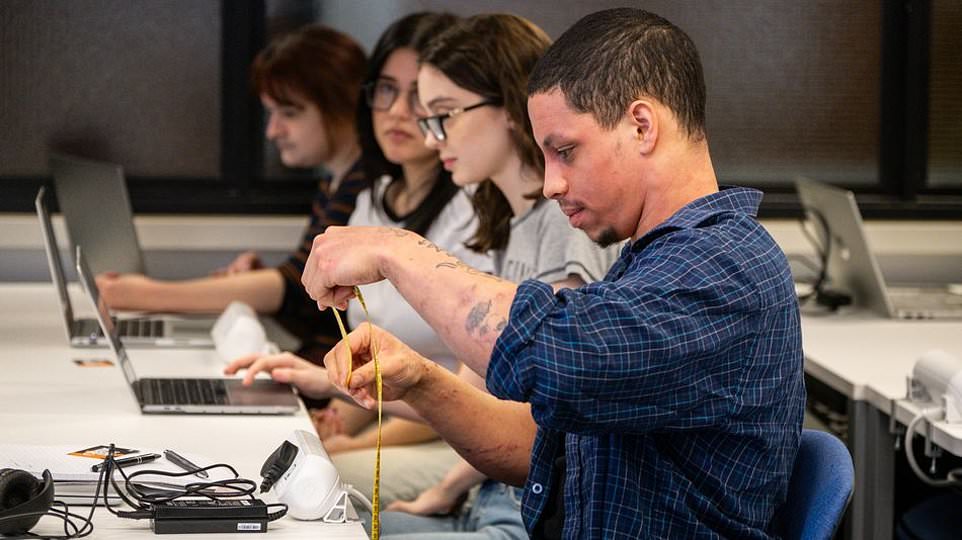
Overview
Bath Spa University (BSU) has three contrasting campuses in and around the Roman city of Bath, and an outpost in Hoxton, East London, that is proving to be a big hit. The capital site contributed significantly to Bath Spa’s record number of new students in September 2024. The university has a very different feel to its city neighbour but offers a surprisingly diverse range of courses from acting, commercial music and publishing to biology, marketing and cybersecurity. Like its neighbour, however, it attracts students from far and wide, with only around one in six undergraduates recruited from the immediate South-West region last year. The main Newton Park campus sits about four miles outside the city in splendid Capability Brown-designed gardens. Sitting alongside the 14th-century castle tower, the modern Commons building, concert hall, award-winning theatre and outstanding digital and studio resources form a striking blend of old and new. The same could be said for the smaller Locksbrook campus in the city centre, where the university has converted a Grade II-listed 1970s furniture factory into an award-winning space for the schools of art and design.
121 (joint). Buckinghamshire New University

Overview
Lights, camera, action! If a career in film or television is for you, then the only UK university to have a base inside a world-famous film studio is worth a look. Buckinghamshire New University (BNU) has 15 undergraduate programmes taught at Pinewood Studios, a short distance from its main campus in High Wycombe. Courses cover BAs in animation, costume design and making, film and television production, visual effects and 3D game art, which are offered with or without a foundation year, and hair and make-up for film performance, which can be studied as a two-year degree programme. BNU looks to take care of its diverse student body, which includes mature returners and first-generation students – one of the reasons why it won our University of the Year for Student Support two years ago. Financial support benefits the many not the few, and the university strives to keep the hidden costs of higher education to a minimum. The university has restricted the increased tuition fee of £9,535 charged from September 2025 to new students only. Existing students will complete their courses paying £9,250. Headquartered in High Wycombe, the university has further outposts for healthcare courses in Uxbridge, and work-related programmes in Aylesbury.
121 (joint). University for the Creative Arts
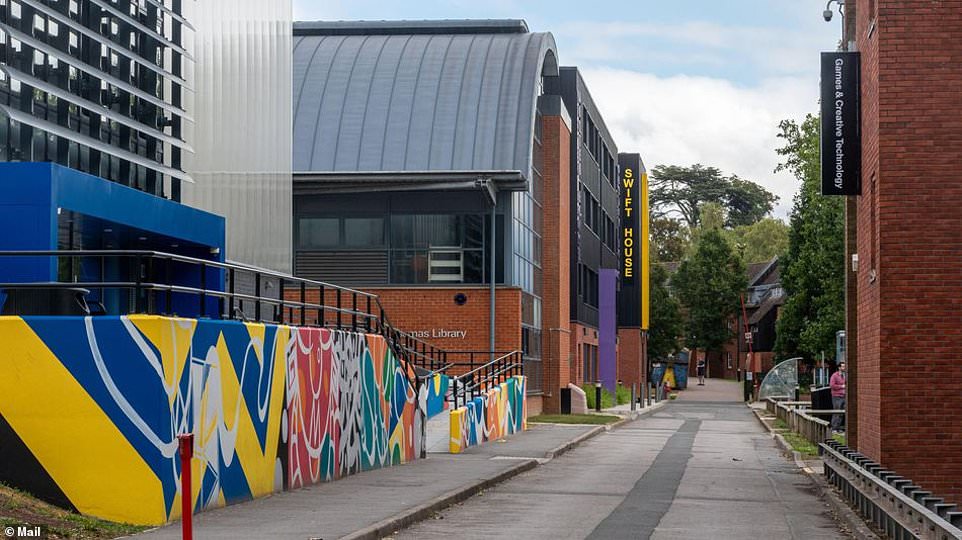
Overview
Dream. Discover. Disrupt. The University for the Creative Arts (UCA) challenges its students to think outside of the box – and the latest university marketing handle neatly captures this spirit. With just under 8,000 undergraduates spread across four sites in South-East England, UCA is the second-largest specialist arts institution in this guide, behind the University of the Arts London. And, like its London rival, it boasts a line-up of illustrious alumni – including Dame Zandra Rhodes, Karen Millen, Dame Tracey Emin and last year’s RuPaul’s Drag Race winner, Nymphia Wind – to inspire the current generation of would-be creatives. Applications are flourishing, with the near-7,000 who applied through Ucas for admission in September 2024 contributing to a total beaten just twice in the past decade. Many students are assessed for their place via a portfolio or audition as well as, or instead of, the traditional grade-based route. There are campuses in Farnham, Canterbury and Epsom and a site at the Maidstone television studios. The three campuses form compact, supportive academic and artistic communities with good student-staff relationships. Courses span most arts disciplines, from acting, animation, body art and ceramics to fashion design, filmmaking, TV production and textiles.
123. University of Wales Trinity St David

Overview
A decision to move all humanities courses from Lampeter to Carmarthen starting this September was not without controversy. It brings humanities students alongside teaching, early years and arts students in Carmarthen and adds critical mass to the student body there, which will diversify the student experience. However, all but ending undergraduate teaching at Lampeter (bar two programmes in Sinology) attracted protests outside the Senedd in Cardiff as campaigners sought to retain the university’s history. The University of Wales Trinity St David (UWTSD) began life as St David’s College, in Lampeter, in 1822. The move comes as UWTSD wrestles with successive underlying deficits of £1.2m and £12.5m. Since 2013, when it absorbed the former Swansea Metropolitan University, UWTSD has had a significant presence in Swansea, which is home to most of the institution’s science, technology, engineering, art and design degrees. This September the Swansea Business School will relocate to the city’s SA1 Waterfront campus. There are smaller outposts in London (for undergraduate degrees in health and social care, business management, computing, and leadership and management skills for the workplace), Cardiff (principally education, law, policing and performing arts) and Birmingham (education, health and social care, computing and business management).
124 (joint). London Metropolitan University
Overview
London Met draws the vast majority of its students from the capital itself. Most are based on a large campus on the Holloway Road, in North London, which is in the throes of a significant makeover set to be complete by September 2026. Others are based on smaller campuses in Shoreditch and Aldgate on the fringes of the City of London. After some troubled years, London Met is now on a much more secure financial footing after sterling work by Professor Lynn Dobbs, vice-chancellor from 2018 to 2024. The university is as socially and ethnically diverse as the city it stands in, with black heritage students the biggest grouping in the September 2024 intake, which was the university’s smallest in the past ten years. Just under half the students are from homes where neither parent went to university and even more are mature students aged over 21. Courses often include a foundation year to widen access to include pupils without the grades to progress straight on to a three-year degree. Students are split between six academic schools – computing and digital media; human sciences; social sciences and professions; business and law; the built environment; and art, architecture and design.
124 (joint). York St John University

Overview
The smaller of York’s two universities, York St John (YSJ) caters for a more local student population – two-thirds of whom come from Yorkshire and North-East England – and offers university education on a more personal scale. The formula is clearly successful, as YSJ enjoyed a third successive year of record applications for courses beginning in September 2024. YSJ’s 5,500 or so undergraduates study a broad range of courses, and it sends many of its graduates into the public sector via its teaching, nursing and allied healthcare programmes. Healthcare students have benefited from considerable recent upgrades to facilities, the latest of which include the introduction of an MRI scanner, X-ray machine and midwifery and operating theatre suites. The university scores well in the annual National Student Survey (NSS), particularly for student support, which comes in many forms – including a new student hub which is designed to resolve problems more efficiently. And, to round everything off, it’s just a short walk from the university’s campus to York’s historic city centre and the glorious York Minster, where graduation ceremonies take place. This is perhaps YSJ’s ultimate piece of one-upmanship on its Russell Group neighbour.
126. Hartpury University

Overview
Hartpury University shares a site with Hartpury College, five miles from Gloucester. This allows students to move seamlessly on to higher education, with many enrolling to study A-level, T-level and BTEC qualifications and leaving with a degree after five years. It is one of the few places in the country where this progression is possible and it is proving popular, with record numbers of students at both the university and college. Applications have topped 3,000 for four successive years since the pandemic, and admissions have exceeded 800 for the past five years. The university, which became independent in 2018, offers just over 30 degrees with a strong accent on agriculture and sports – areas in which the university has a national standing. Hartpury has a 360-hectare farming estate, which operates as a commercial farm and is home to cows, sheep and arable land. It has a national reputation in rugby union, world-class equestrian facilities, and numerous social sports teams. High standards have been recognised with a triple gold award – covering student experience, student outcomes and overall rating – in the 2023 Teaching Excellence Framework, an outcome secured by only 15% of institutions nationally. University facilities have been upgraded since university status was achieved, with the new veterinary nursing and technical skills centre that opened this year being the latest addition.
127. Royal Agricultural University

Overview
From the King to Jeremy Clarkson’s co-star, the Royal Agricultural University (RAU) has friends in high places. King Charles is the latest in an unbroken line of sovereigns going back across the full 180-year history of the RAU to accept its patronage. Meanwhile, Kaleb Cooper, the spin-out star of the Clarkson’s Farm television show, is behind two £3,000-a-year scholarships for students studying agriculture who come from a non-farming background, like Cooper himself. The tie-up shows the first agricultural college in the English-speaking world is able to move with the times. It is seeking to make itself a university of choice for students from diverse and under-represented backgrounds, increasing the number of state-educated recruits and the proportion from the 40% of postcodes considered to be the most deprived – all a far cry from the days when it recruited more privately educated students than even Oxford and Cambridge. The academic offering is built around eight core degrees – in agriculture, agricultural business management, bloodstock and equine performance management, business management, environment and sustainability, equine science and business, real estate, and rural land management – plus several complementary foundation degrees, foundation years, top-up courses and professional placement years. The university will be hoping that a 25% fall in admissions in September 2024 was just a blip.
128. Arts University Plymouth

Overview
Arts University Plymouth (AUP) was named South West University of the Year at the 2024 Whatuni Student Choice Awards, based on the opinions of its own students. This is reflected in our performance measures, too; its consistently excellent results for teaching quality and student support in the National Student Survey (NSS) would suggest an overall ranking in the top half of our table. But AUP is undone by a predictably poor showing in our graduate jobs and salary measures (ask any creative about lousy pay) and not participating in the last Research Excellence Framework, which predated AUP’s elevation to full university status. The former is no surprise and the latter is no hinderance to the record number now studying here. Most staff are experienced practitioners whose teaching is embellished by their extensive experience in the creative industries. AUP is one of five specialist arts universities in this guide. The campus has 13,000 square metres of studios and workshops across four buildings. Facilities are being ramped up and student financial support expanded for one of the most socially diverse student populations in the UK – almost 60% of the intake are the first in their immediate family to go to university.
Unranked. Birkbeck, University of London
Overview
Birkbeck is different. At a time when the social scene comes alive in most other universities, Birkbeck students are usually to be found sitting down to classes. This is because many of its students are working or dealing with family commitments through the day, making evening study the most convenient and practical option open to them. Most teaching at Birkbeck takes place between 6pm and 9pm, with some courses also taught between 2pm and 5pm. Not content with this flexibility, the university is in the process of rolling out new HyFlex technology that will allow students to better engage with classes remotely for the times when getting to campus is not possible. Birkbeck’s campus is in Bloomsbury, in the heart of London’s West End and close to the headquarters of the University of London, of which Birkbeck is part. The university is one of only three universities in this guide which do not feature in our rankings, due to the largely part-time student population and the university’s highly flexible approach to studying – both admirable features but ones which make it hard to compare Birkbeck with other institutions. The university offers a wide range of undergraduate, postgraduate, full-time and part-time programmes and its course portfolio is evolving all the time.
Paying the bills
Birkbeck runs budgeting workshops, a monthly food pantry, and offers expert guidance on getting the most out of the student loans system. Direct financial support from the university includes a cash bursary worth £800 to full-time students from homes with an annual income of less than £25,000 to help with the practical costs of study such as travel, printing and textbooks. The bursary drops to £450 for those from homes with income ranging from £25,000 to £39,999. Both are paid pro rata for part-time students. Following a needs-based assessment, students (usually from homes with less than £25,000 annual income) can access up to £4,000 in help with living costs through the Birkbeck financial supportscheme. Further targeted support comes from the Access to digital learning fund (up to £500 towards the costs of laptops and broadband), a hardship fund (for those whose circumstances change unexpectedly, for example with redundancy, and worth up to £1,000), and a summer support fund (up to £600 towards meeting living costs during the summer vacation). Most students live at home but there are places available in the University of London’s intercollegiate halls. Prices in 2025-26 range from £8,128 for a 40-week contract in small single room with shared bathroom in International Hall to £20,940 for a 50-week let in a large single ensuite room in Garden Halls.
Unranked. Southampton Solent University
Unranked. The Open University

Overview
The Open University (OU) is the ultimate university for widening participation and social inclusion – a pioneer in this area long before the phrases became touchstones for higher education in the 21st century. Delivering its courses remotely from the outset, the OU has a wide reach, with almost 200,000 students enrolled. This unique structure means we are unable to include it in our rankings. Founded by Harold Wilson’s 1960s Labour government, the OU admitted its first students – 24,000 of them – in 1971 with its courses largely delivered by sandal-wearing men with beards late at night on BBC2. Today, most course delivery takes place online with all students assigned to a tutor for each module, enabling personal academic support through teaching and feedback. Further assistance is provided by advisers in support teams. Students interact with both their tutors and peers through tutorials, phone and email contact, and online rooms and forums. Degrees cost less than in a conventional university, and there are no living costs to pay while studying. Two-thirds complete their courses while working full- or part-time and a growing number of younger people are turning to the OU, with 35% of students now aged under 25 when they start their courses.
Unranked. University of Central Lancashire
Unranked. University of the Highlands and Islands
Overview
The University of the Highlands and Islands (UHI) is quite unlike any other university in the UK. Scattered across 48 college campuses in one of the most sparsely populated regions in Europe, the university brings higher education to the doorstep of plenty of its students. UHI welcomes many who might not have gone to university or who have been tempted back into education later in life, with more than half of the students being first-generation students and/or aged over 21 at the start of their course. The university offers more than 300 courses, many of which reflect the particular flavour of northern Scotland – including adventure education and outdoor learning; forestry and treescapes management; degrees taught in Scottish Gaelic; golf management; marine and coastal tourism; and several aquaculture short courses and apprenticeships. The university’s decentralised structure makes it impossible to include in our rankings, but it is profiled in this guide due to the key public service it provides. Where other universities struggled with online course delivery forced on them by the pandemic, for UHI it is in its DNA, with most courses and students routinely combining in-person and online study.
Paying the bills
The range of scholarships and bursaries varies between campuses. Many are course-specific but some, such as discretionary hardship funds, are more widely available. The latter can cover food, bills, travel and other study-related costs for students in acute financial difficulties. The Gaelic Bursary Scheme is open to students attending Sabhal Mor Ostaig on the Isle of Skye or UHI Outer Hebrides in Stornoway. The two £500 Liam Colgan Music Student awards go to a songwriter and a music producer selected by course leaders, while the annual Sidney Black Memorial engineering award offers £500 to inspire new female engineers. A number of prizes are paid to the highest-achieving students on graduation; the annual HRI Munro Architecture Prize of £500, for example, is paid to the top architectural technology student. UHI has a limited number of rooms in university-owned or managed accommodation. The majority are located in Inverness, where UHI has two campuses, and at Sabhal Mor Ostaig. Prices vary from location to location. The cheapest rooms at Inverness, Fort William and Dornoch are priced at £4,857 for a 32-week tenancy in a single room, while the most expensive studio flats cost £7,995 for a 41-week let. At Sabhal Mor Ostaig, there are 84 catered rooms costing £6,810 per year, while 17 self-catered rooms cost £4,560.












